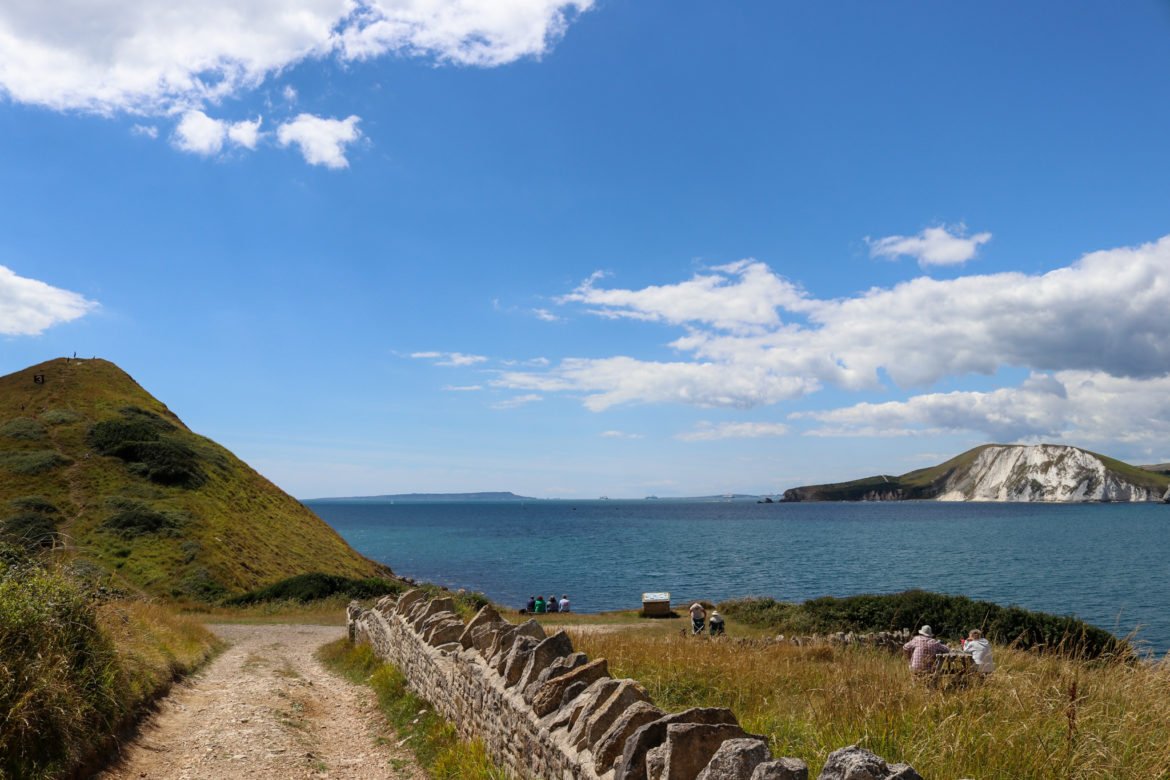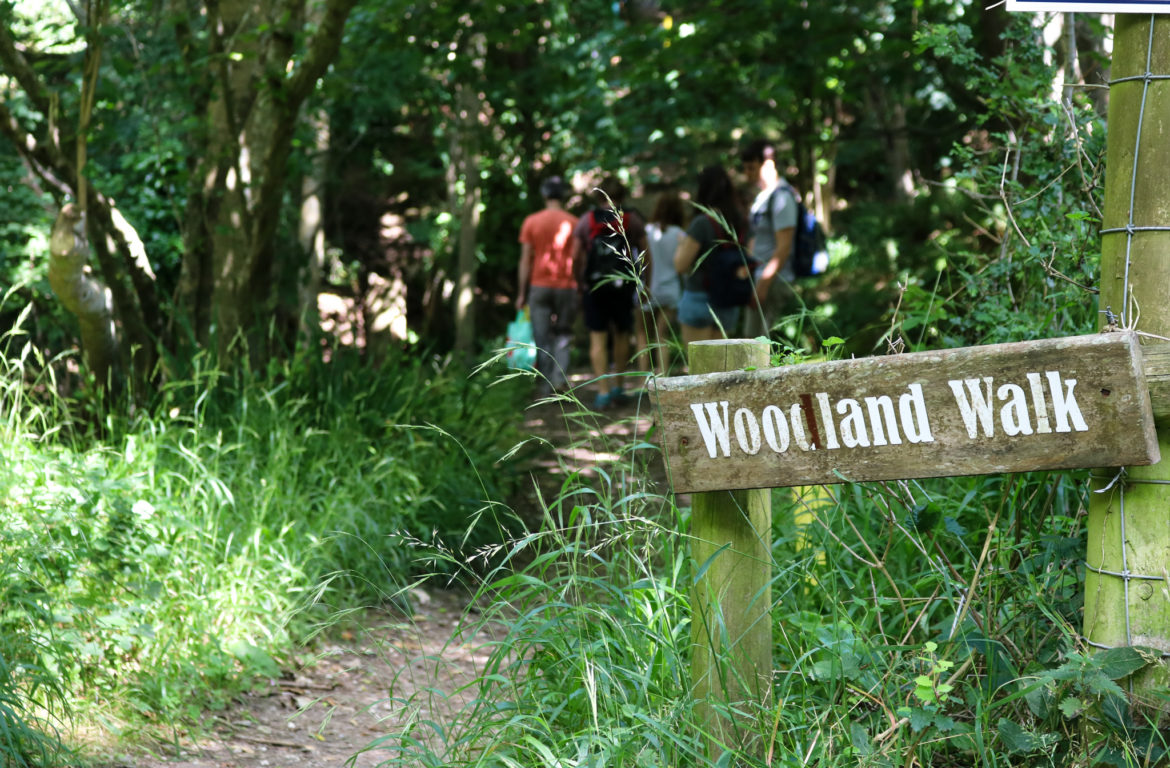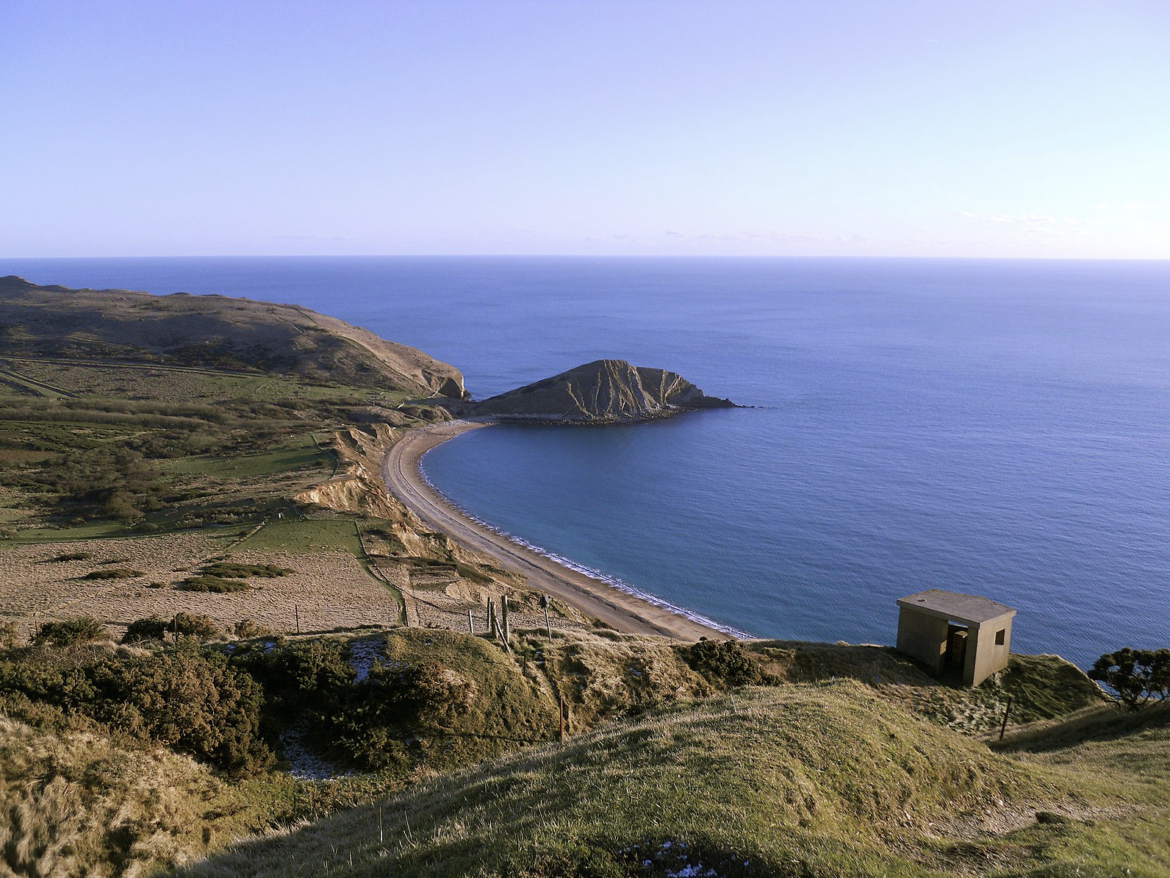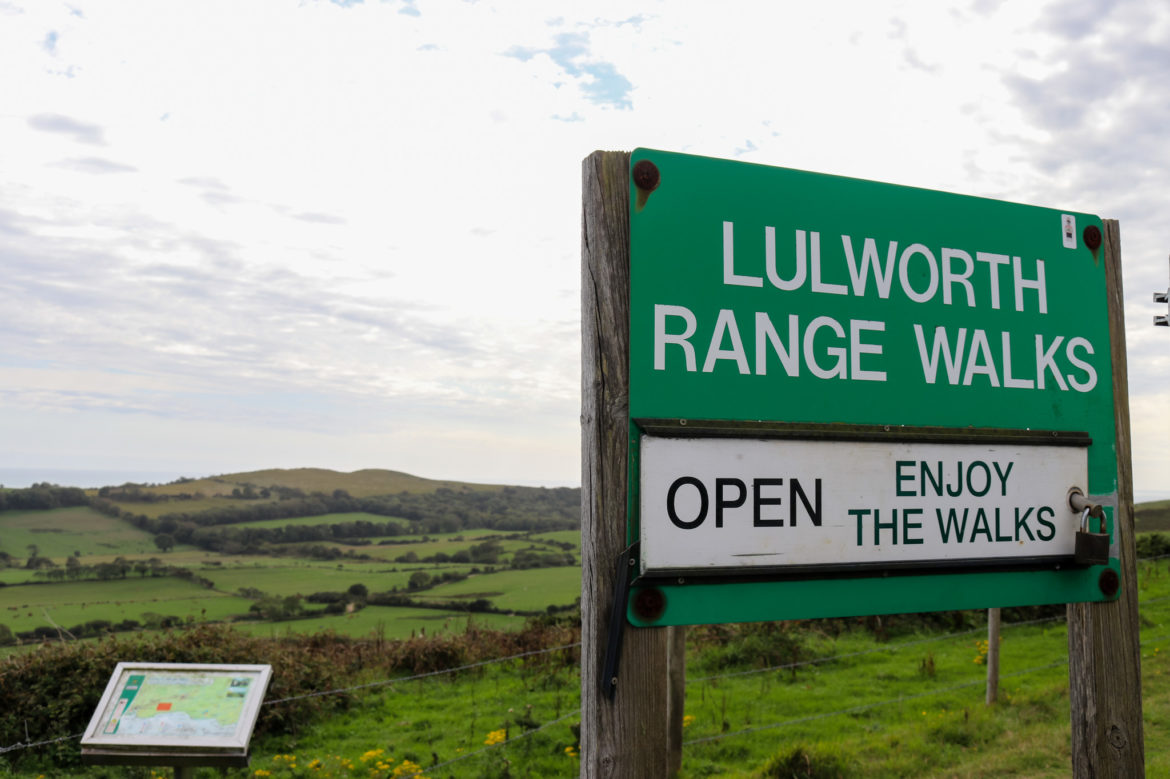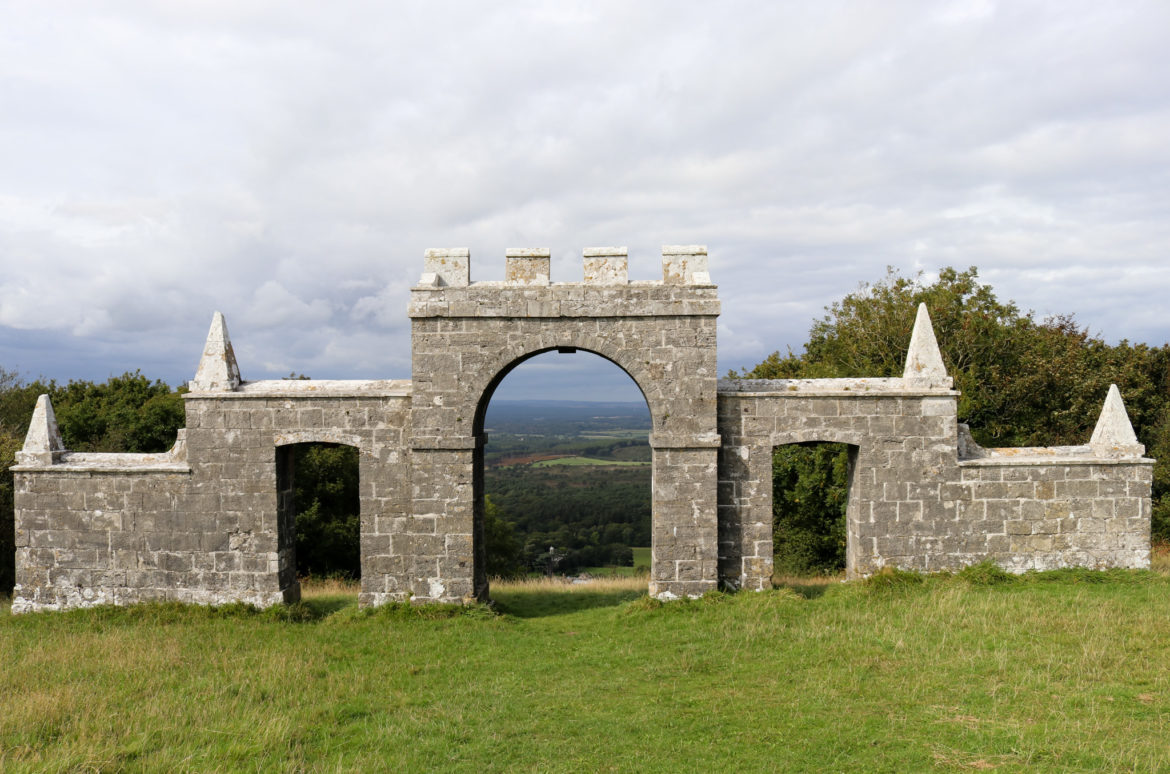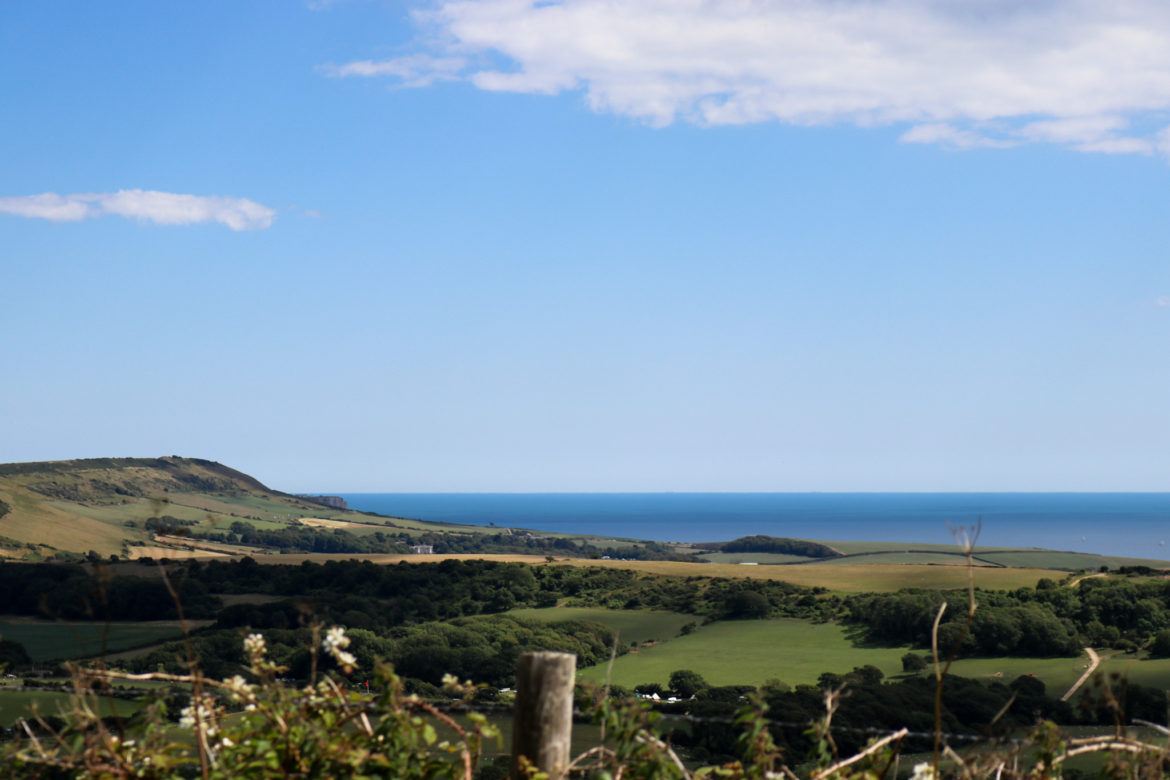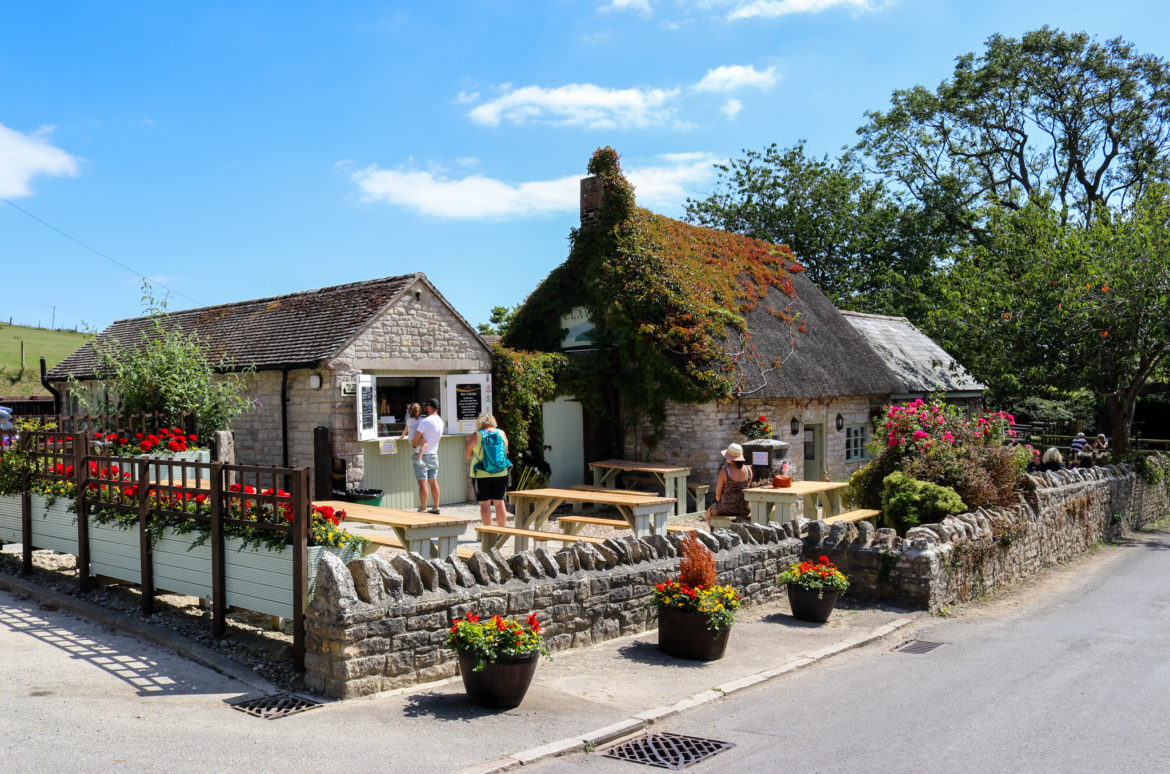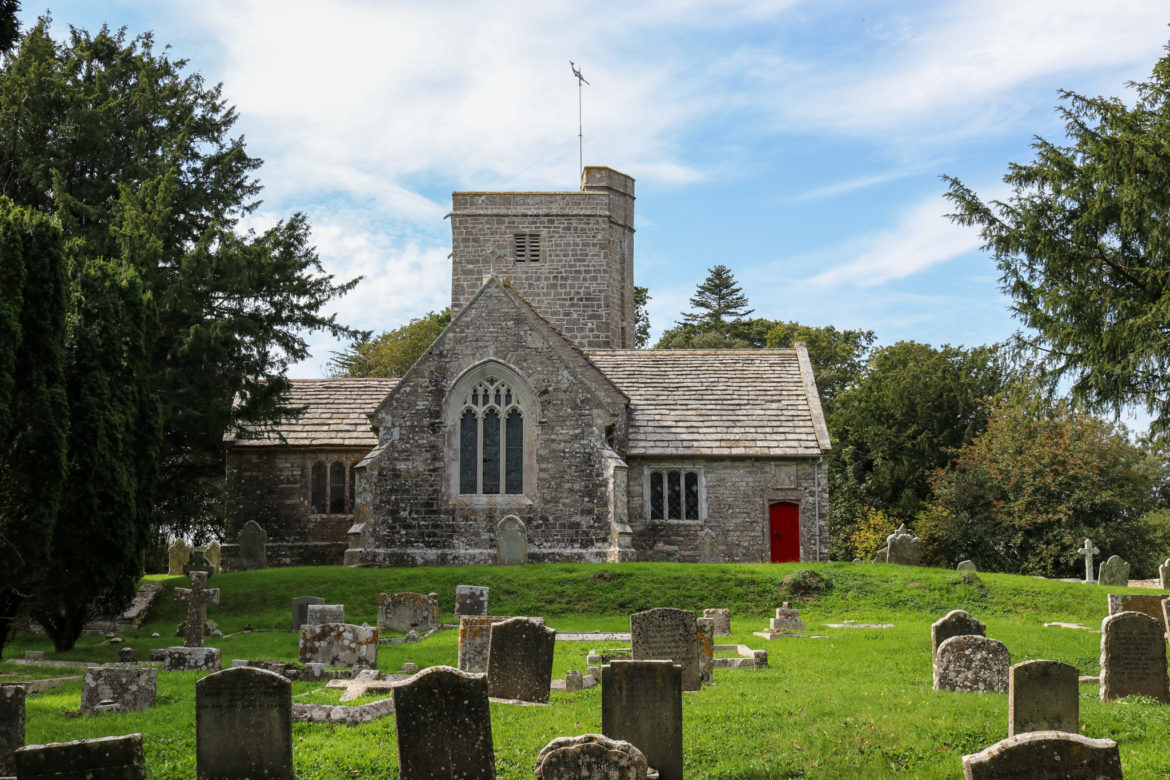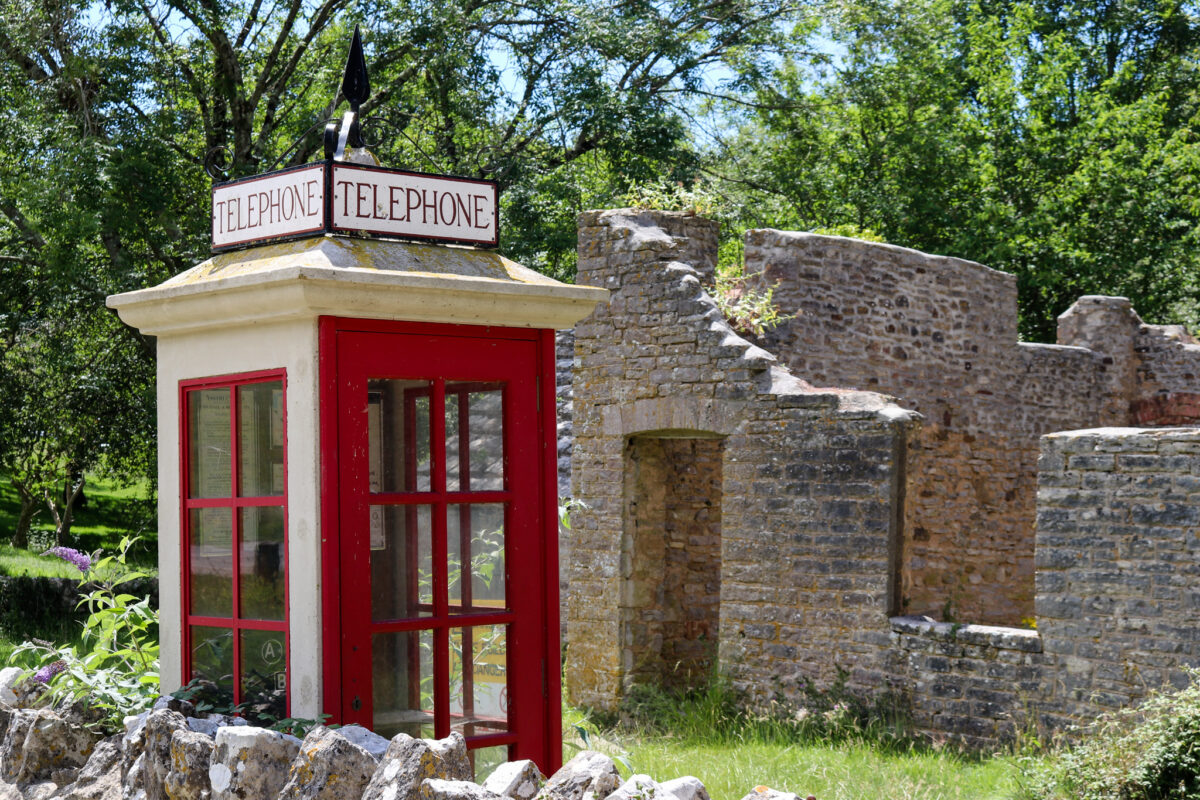The poignant story behind the ‘ghost village’ of Tyneham, abandoned during World War II, will stay with you long after you have walked around its crumbling homes and forgotten farmland.
Evacuated in 1943 so that the British Army could use the area for training purposes, the village soon fell into disrepair. However the church and school room are still mostly intact, having been carefully restored.
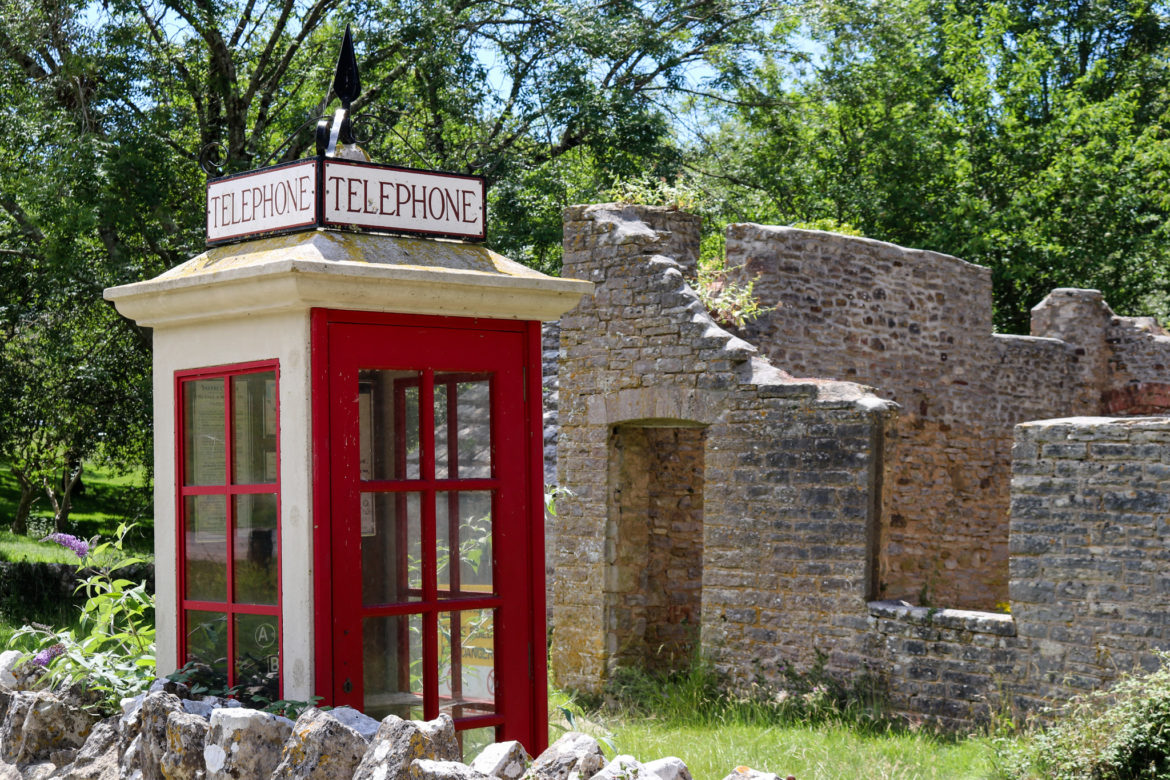
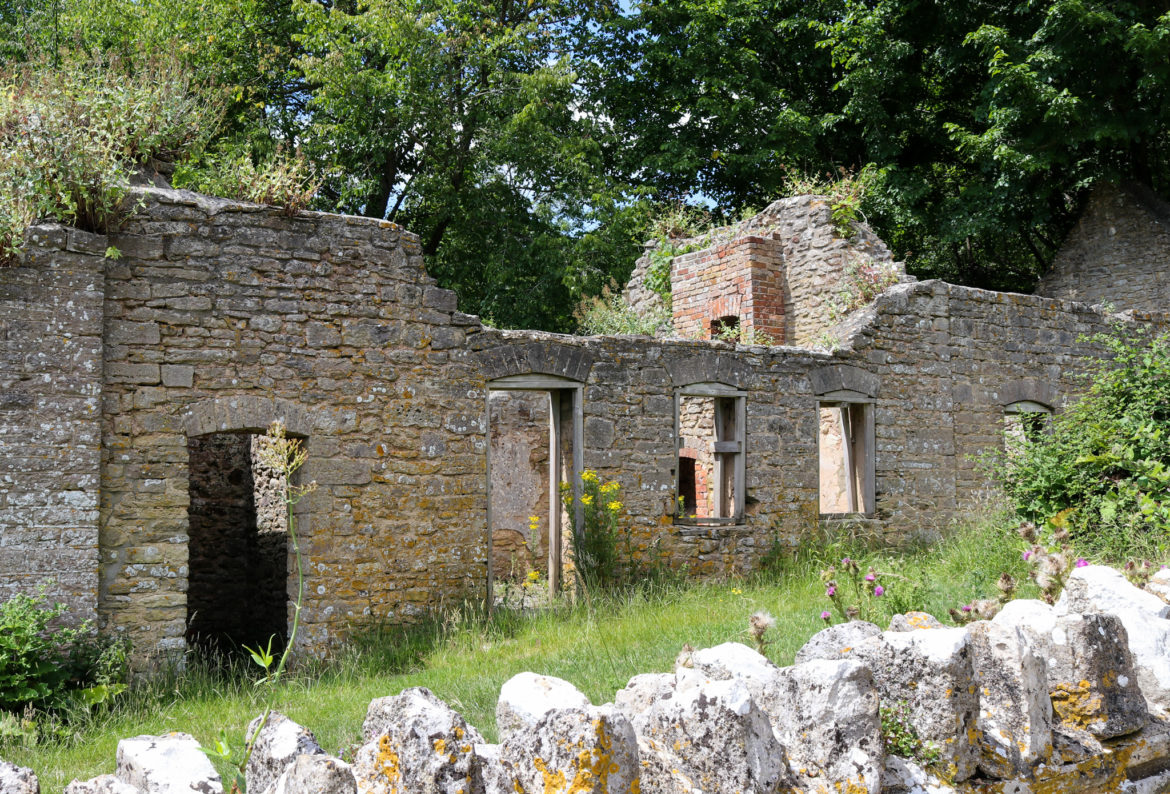
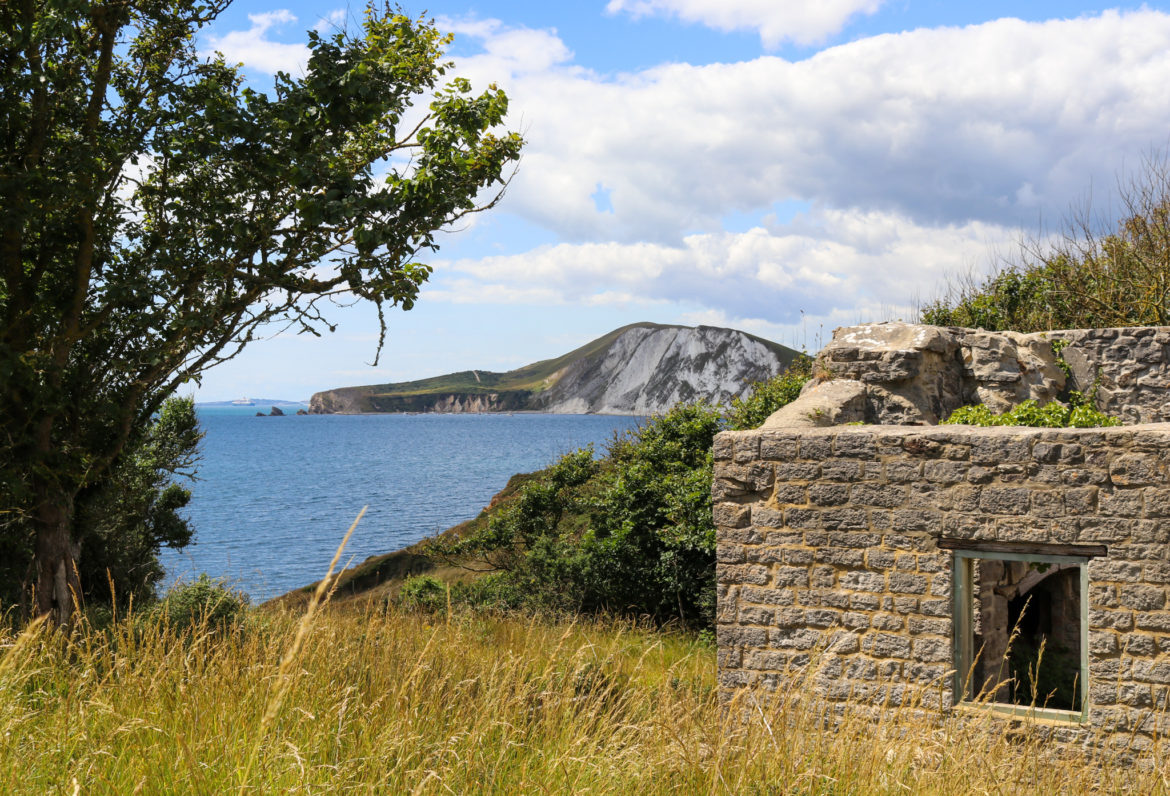
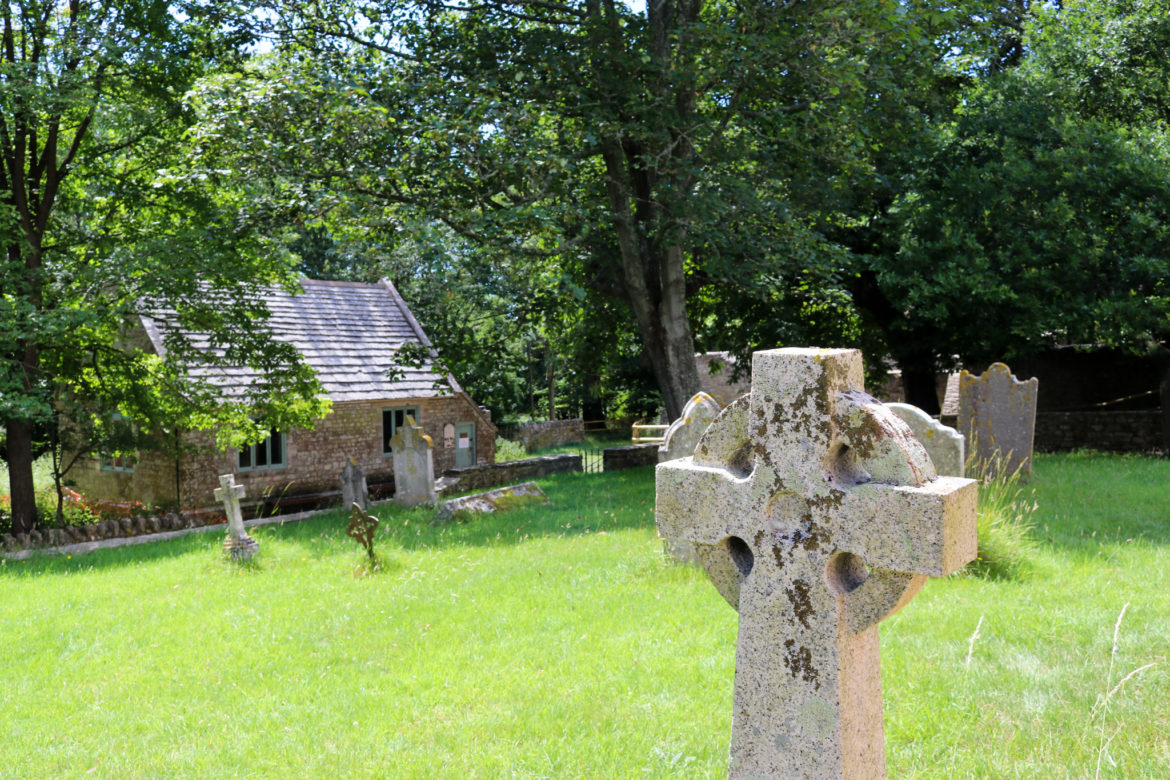
Today, you can visit and walk around this village that simply stopped in time, and explore inside the church and school, discovering their history, including examples of schoolwork and children’s names still on their pegs.
Information is displayed throughout the village about the families that once lived in Tyneham, and what life was like for them in this seemingly idyllic, yet remote spot. Nestled deep within the Purbeck Hills the story of these villagers who never returned and their now deserted homes is an interesting insight into this area’s past.
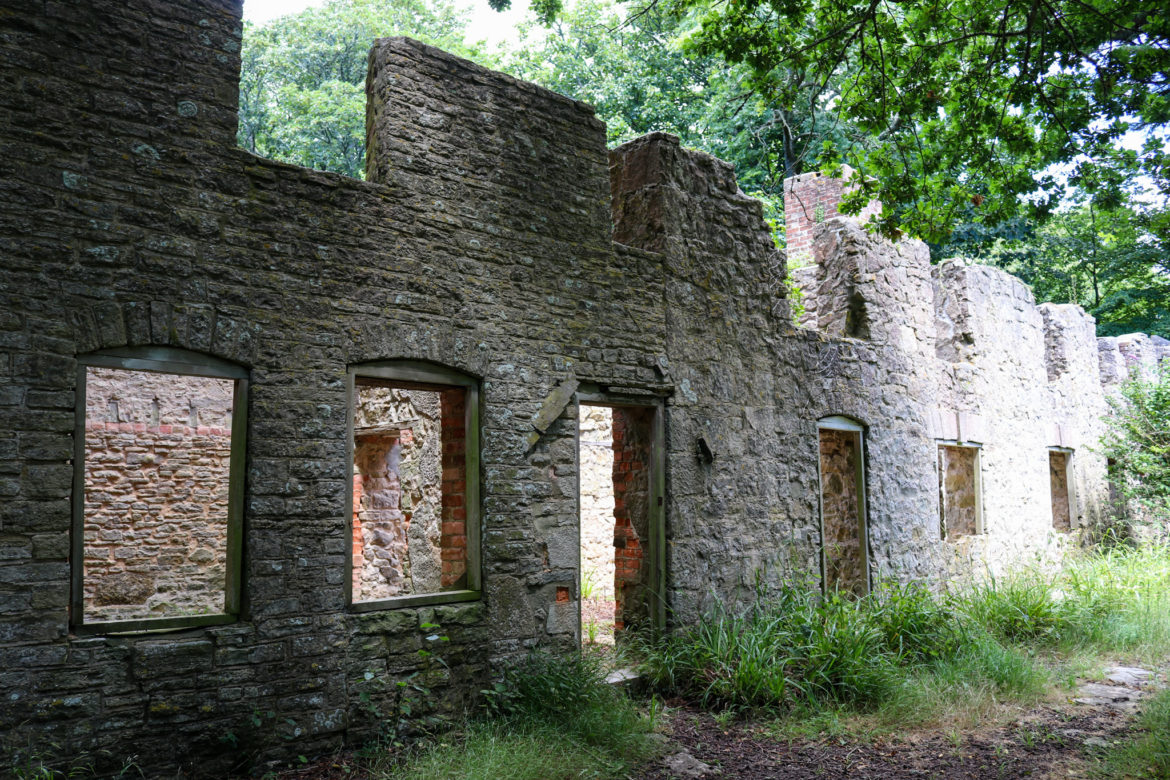
*Note that seven of the buildings are currently cordoned off to the public due to safety concerns. (You can still walk around the outside of most of the buildings). The MoD is investigating whether or not they can be repaired and reopened.*
Tyneham’s history preserved
Walk around the abandoned buildings and explore inside The Row – the first line of cottages you come to. You can also visit the exhibition in the old schoolroom and find out more about Tyneham’s history and the families that lived here through displays in the village church, St Mary’s.
The school and church were granted Grade II listed buildings status in 2020.
The cottages
Although some of Tyneham’s houses are closed to the public due to safety concerns, you can still stroll in and out of ‘The Row’ – a line of terraced cottages once home to some of the villagers.
There are posters in each one with photographs of the families that lived here and interesting information about their lives.
Don’t forget to read the information board on the side of the old telephone box, which when introduced in 1929 was a new lifeline for villagers – but even this has a colourful and ill-fated past.
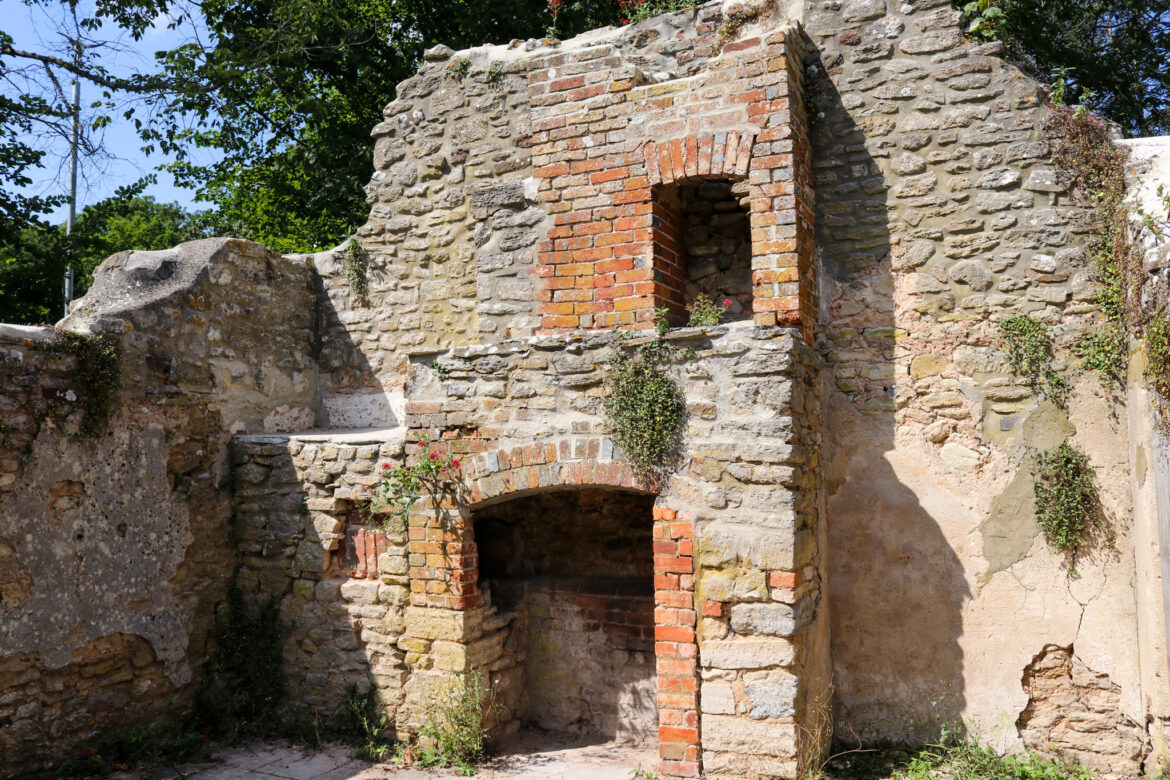
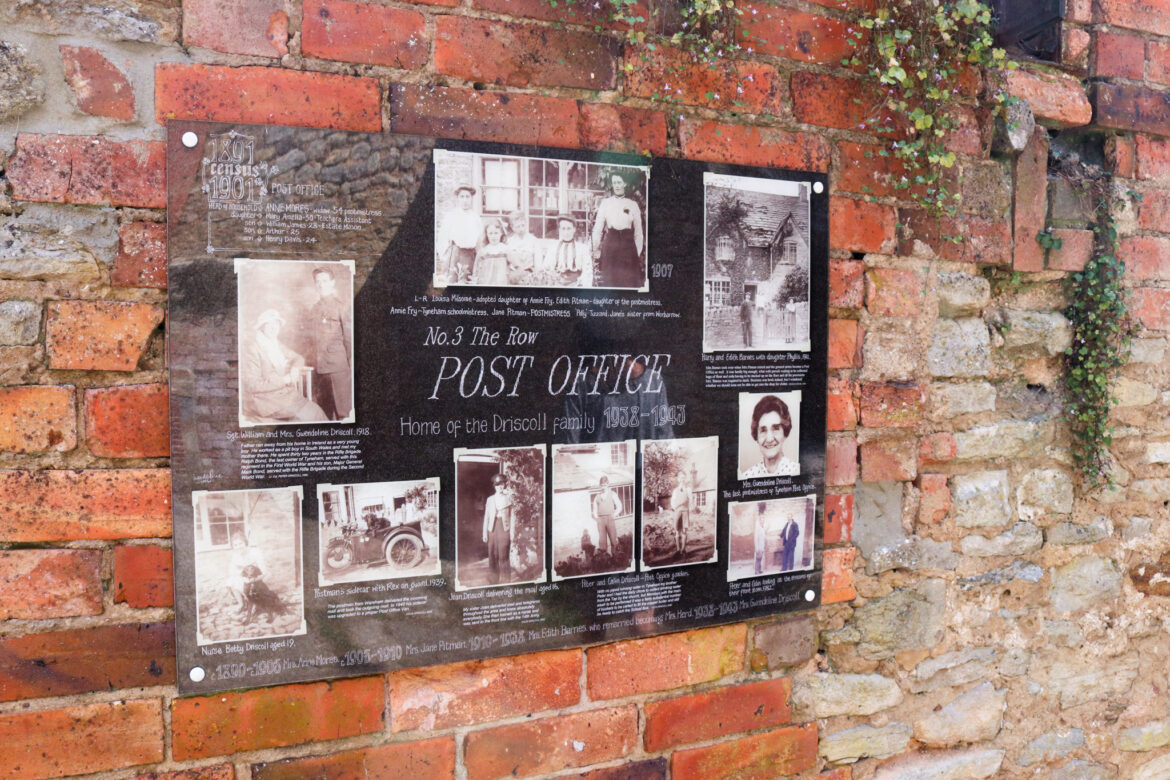
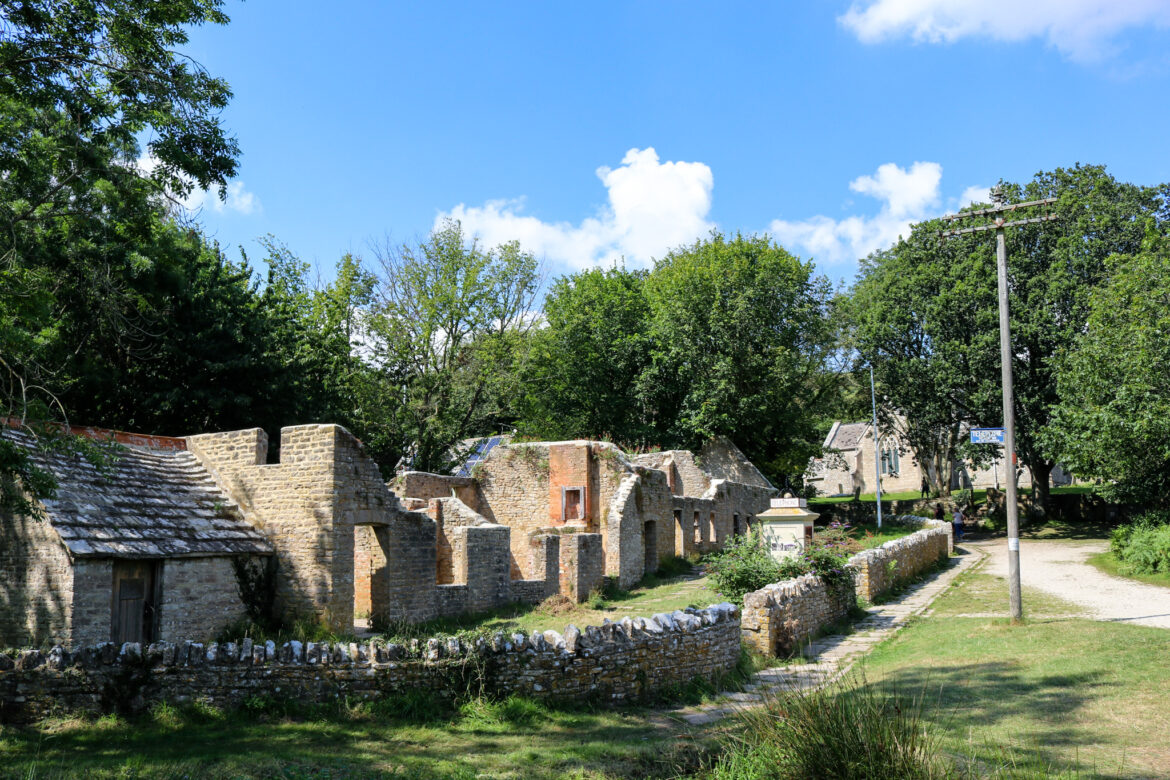
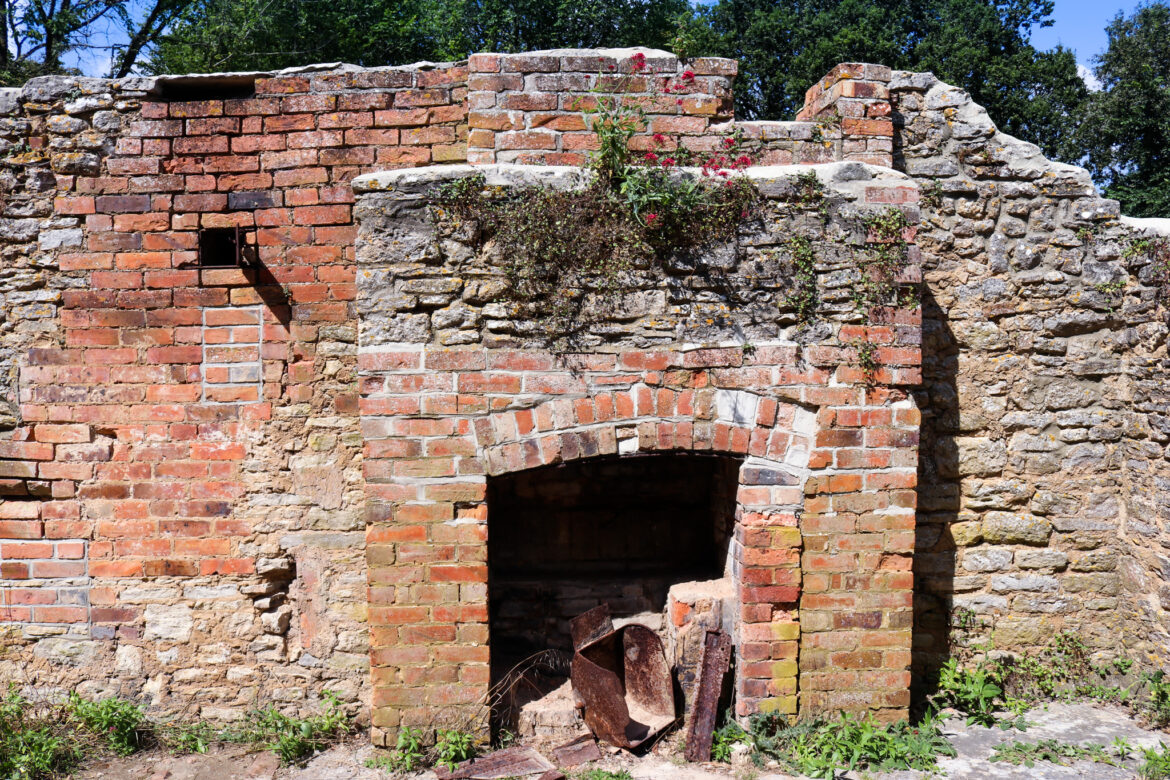
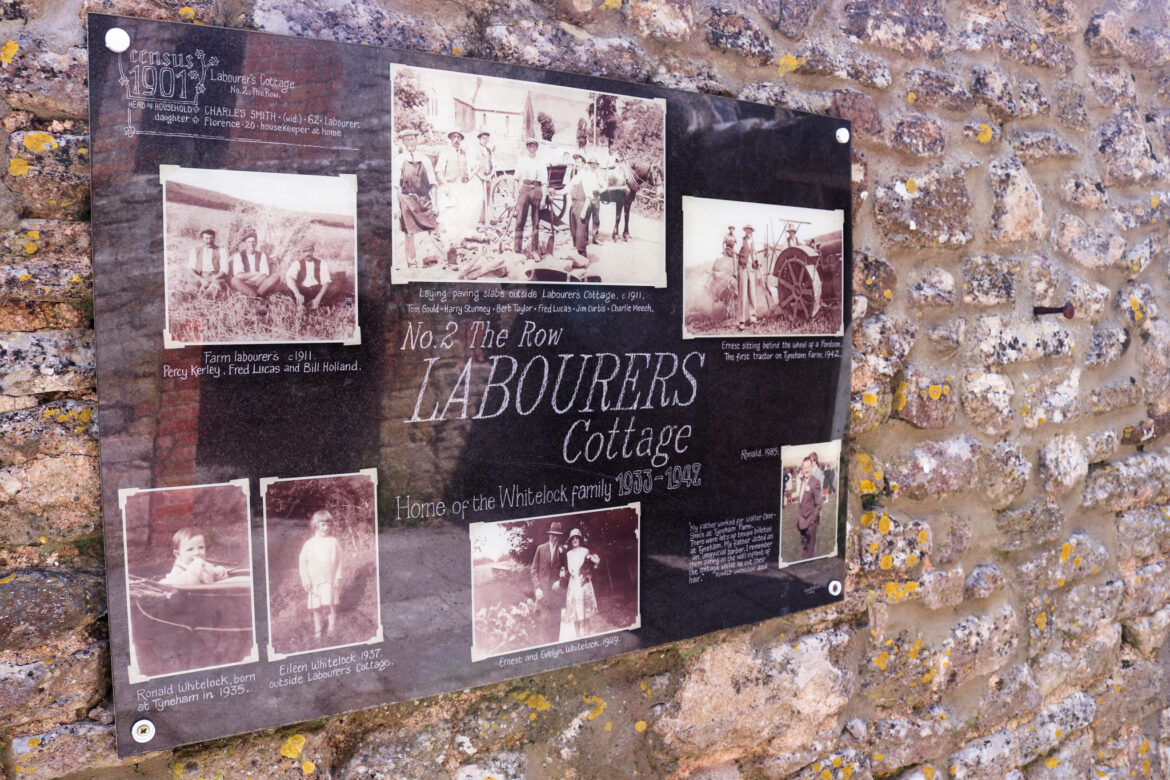
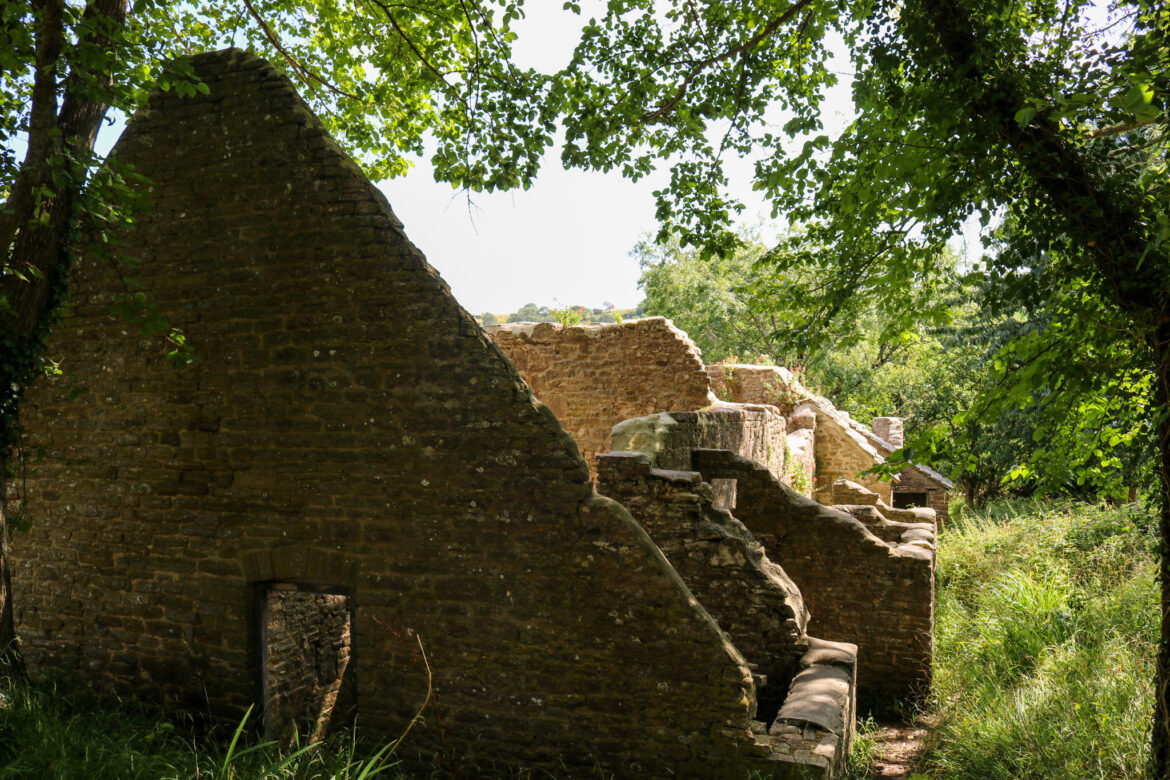
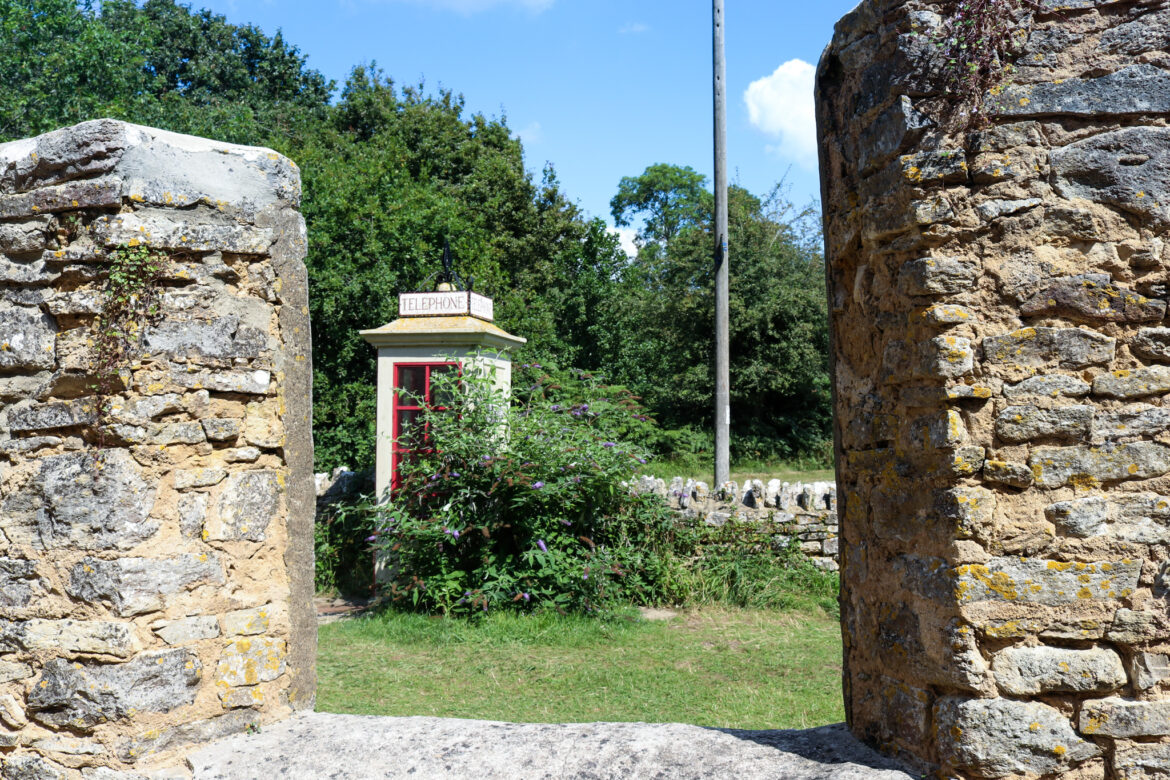
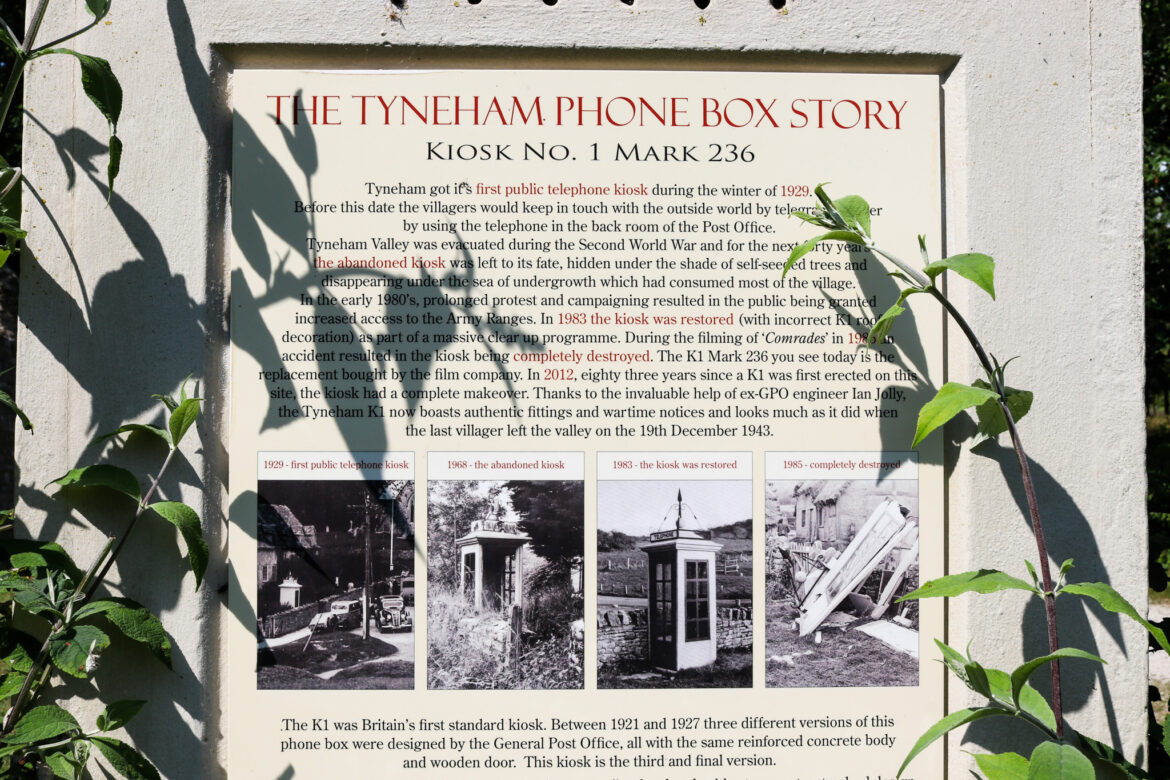
Tyneham School
The schoolroom was built in 1856 for the education of the children of Tyneham village, as well as those from outlying farms and other rural areas and villages. It was then known as the Tyneham National Elementary School.
The school had a capacity of 60, but numbers declined rapidly just over 50 years later following the closure of the Worbarrow Coastguard Station. Numbers then continued to decline – partly due to the farming calendar and factors such as illness and weather impacting pupils’ ability to get to the school – until it was forced to close in 1932, when Tyneham’s children were then sent by bus to the nearby school in Corfe Castle.
You’ll see a large, red curtain toward the back of the room – this was to separate the very younger ones from the main group of children, who could range from the age of four up to 14. Children were expected to work hard and in silence, and always saluted the Union Jack on their way in. But it wasn’t all work and no play – the school sometimes put on shows for the village in the evenings, to which residents would bring their own chairs to sit and watch.
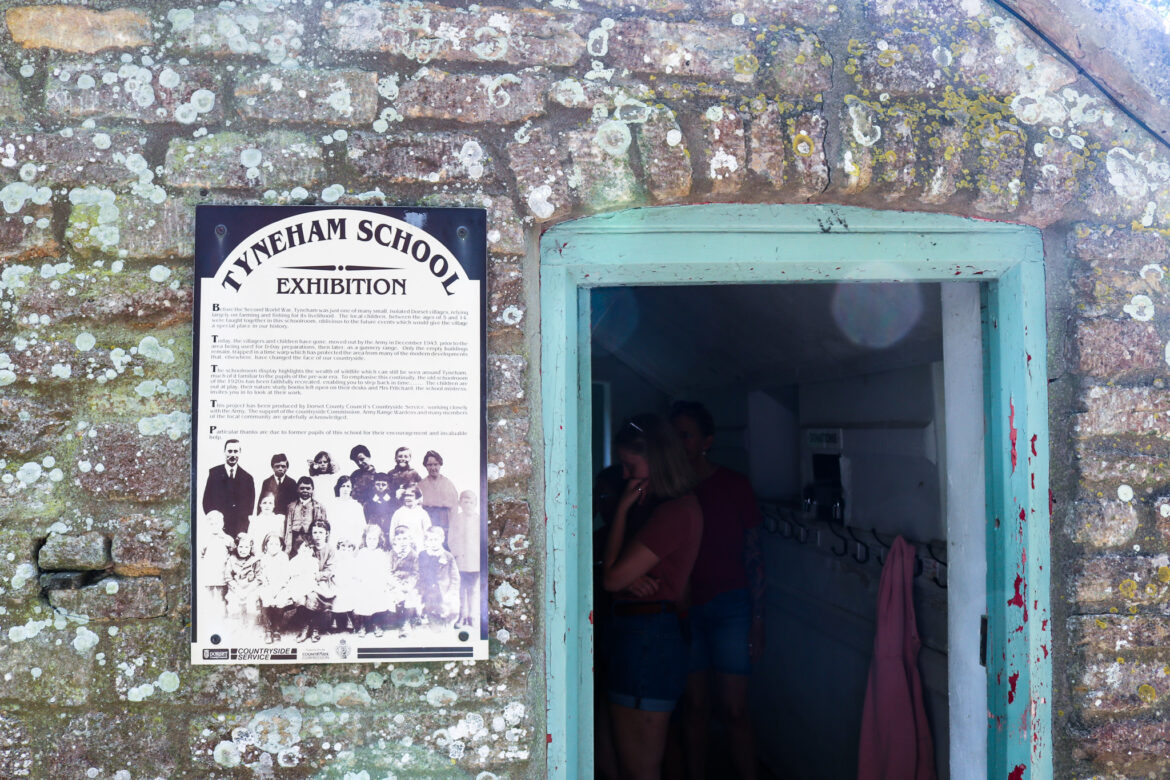
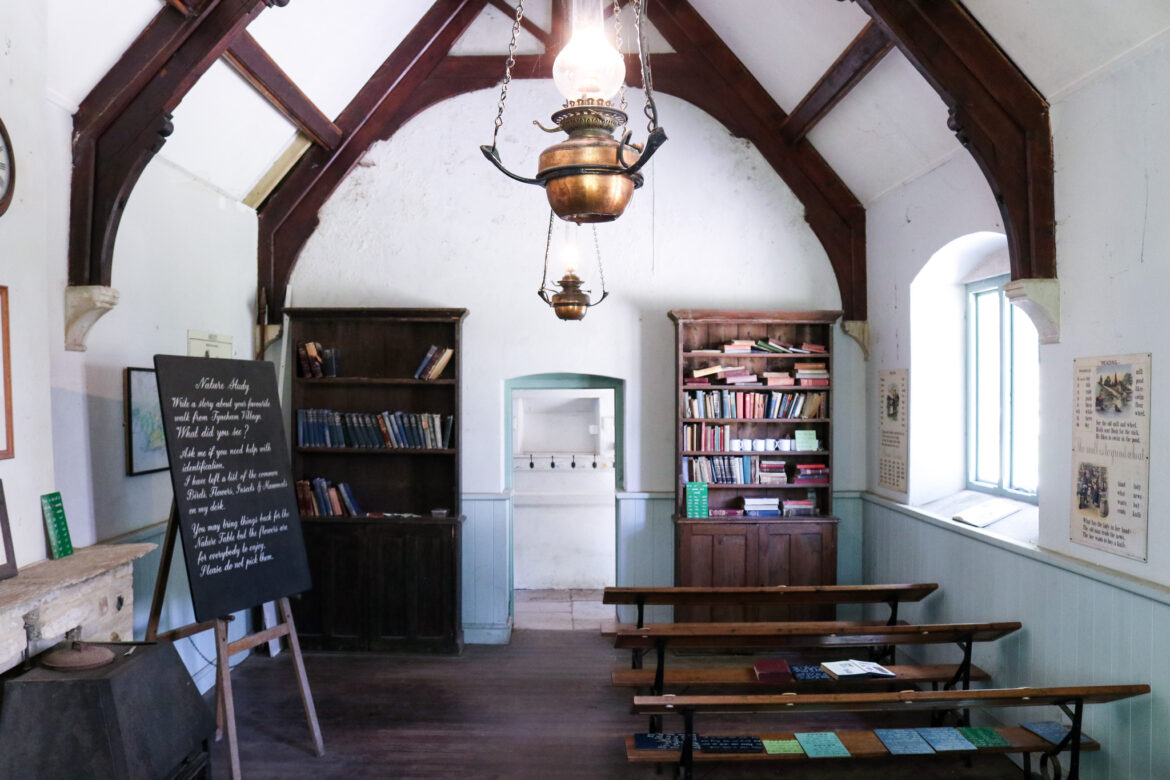
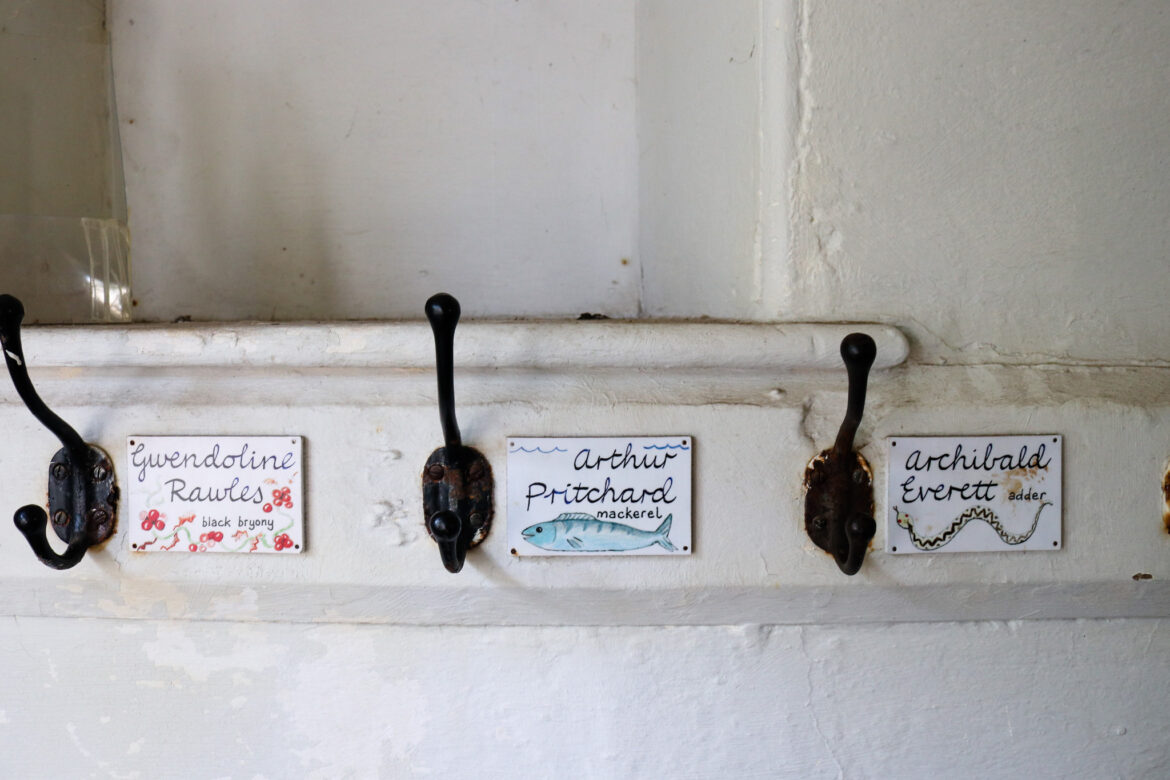
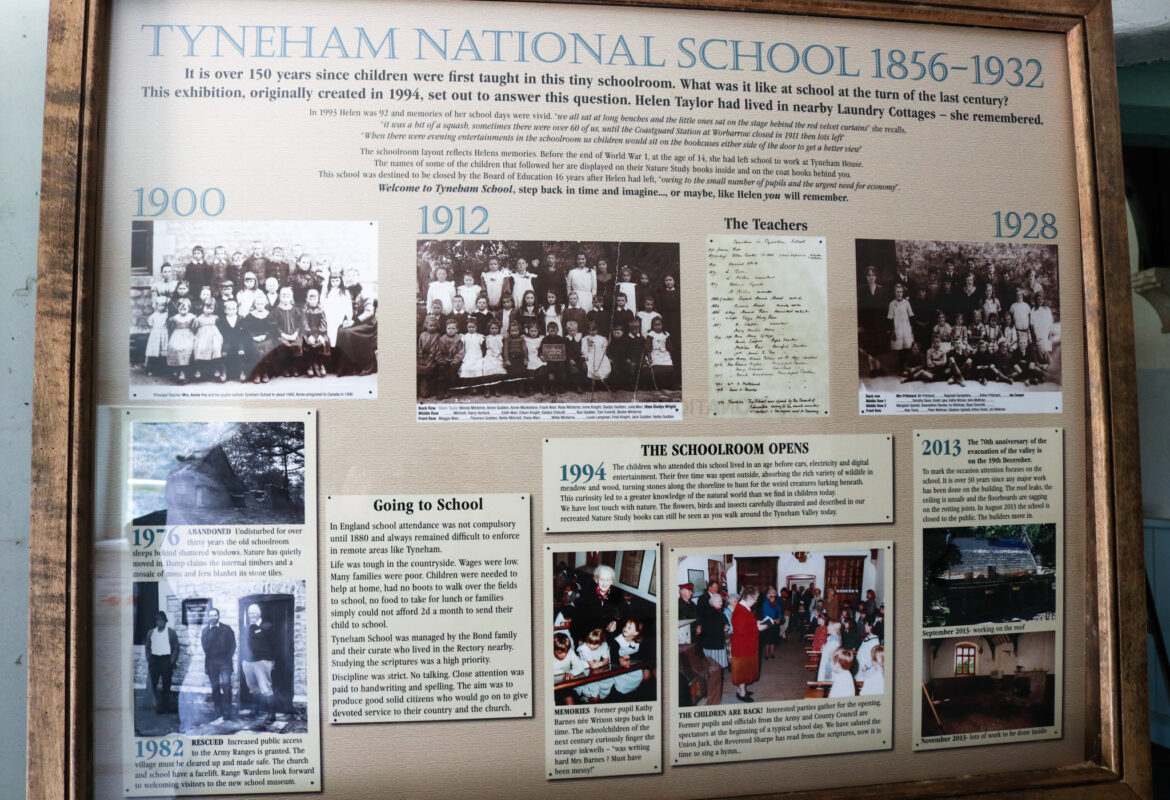
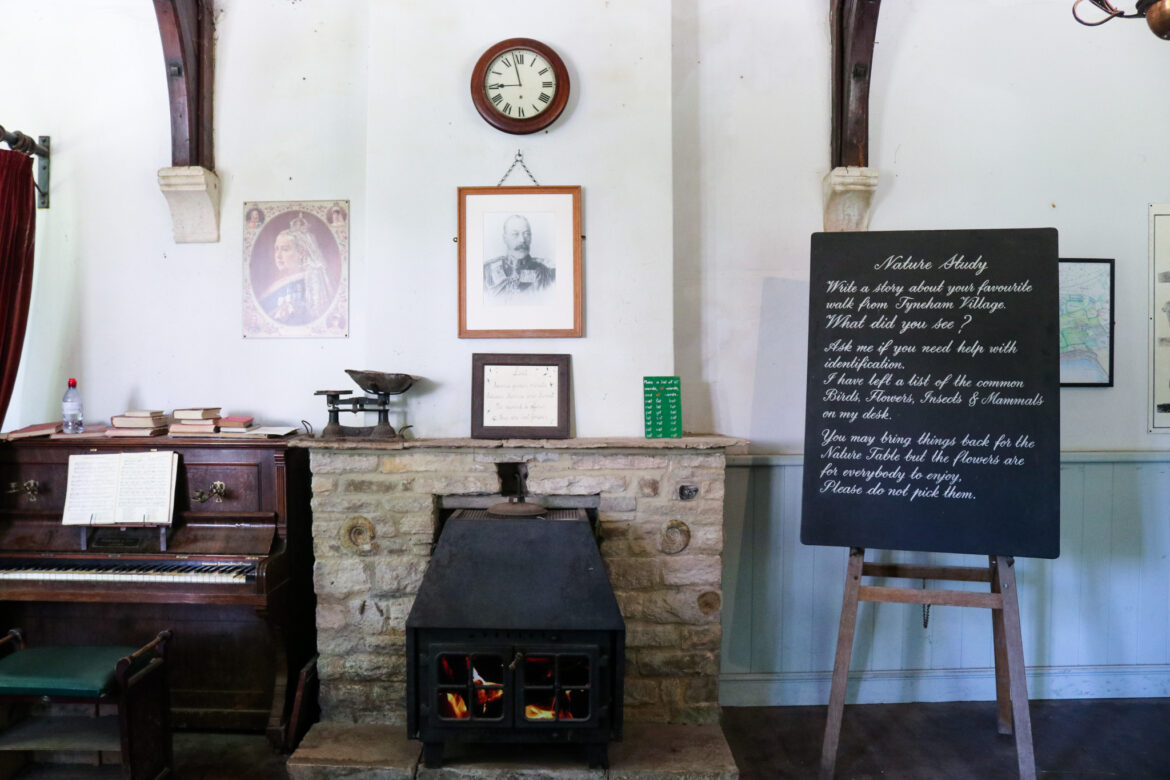
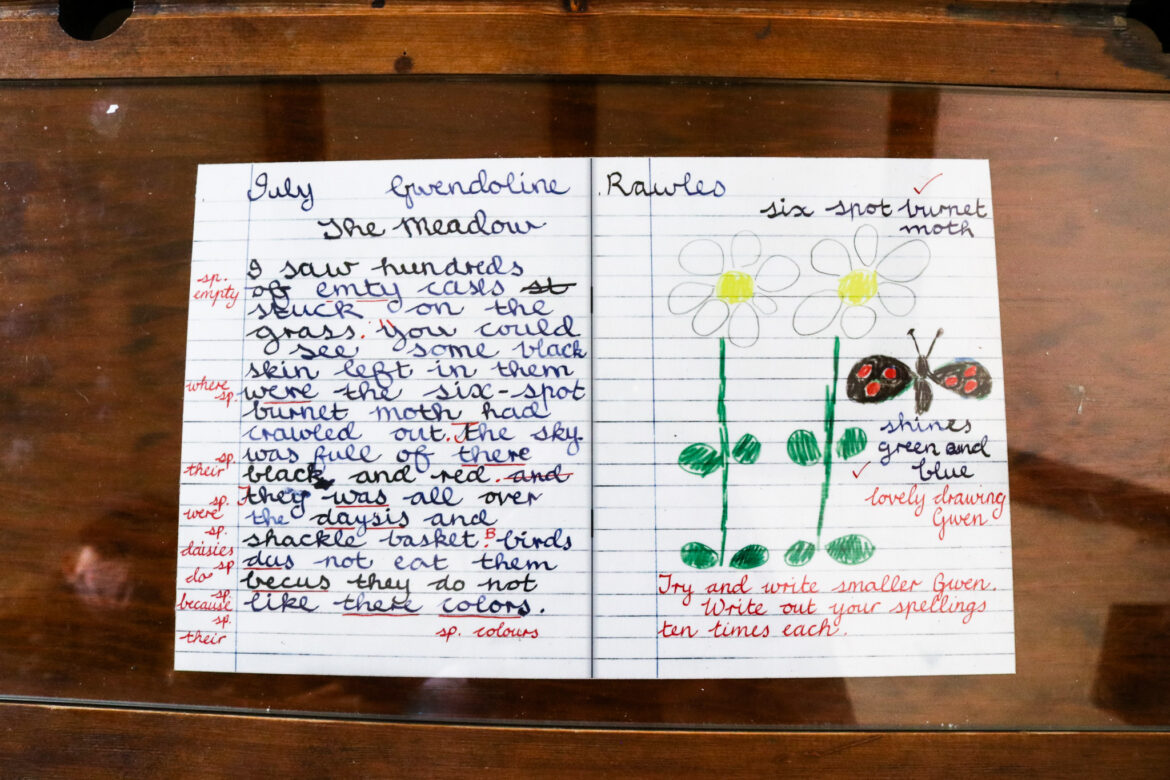
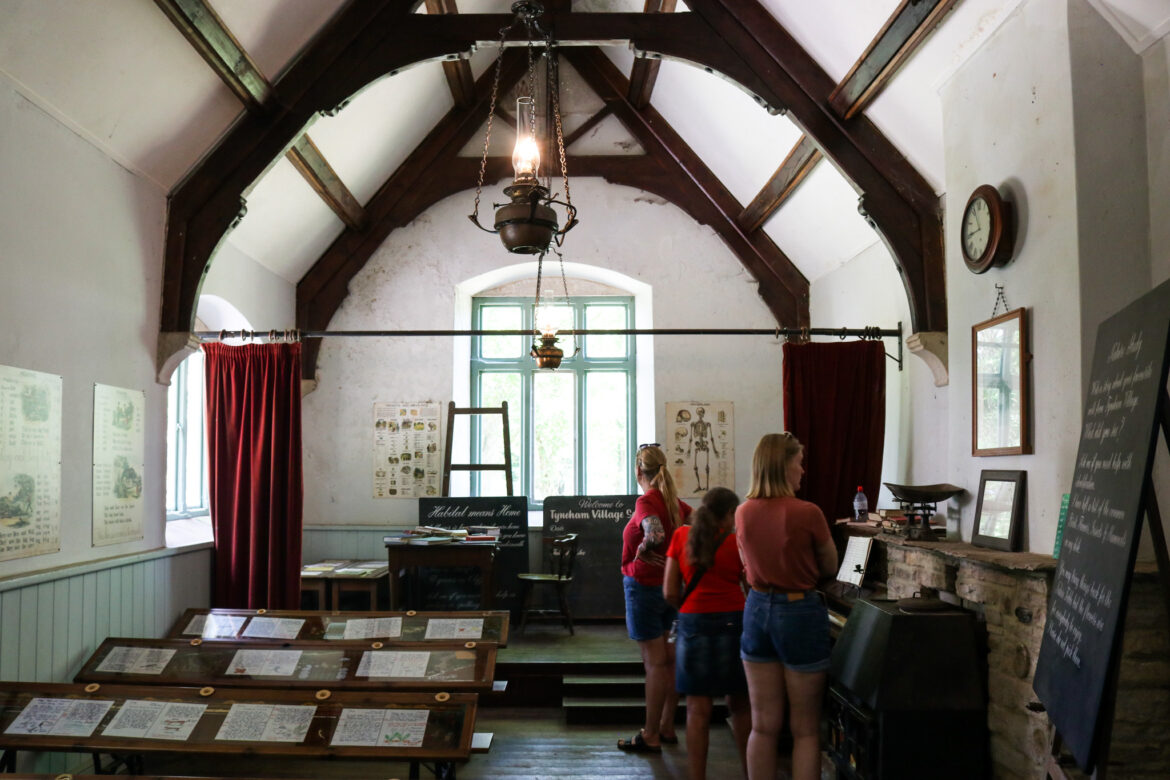
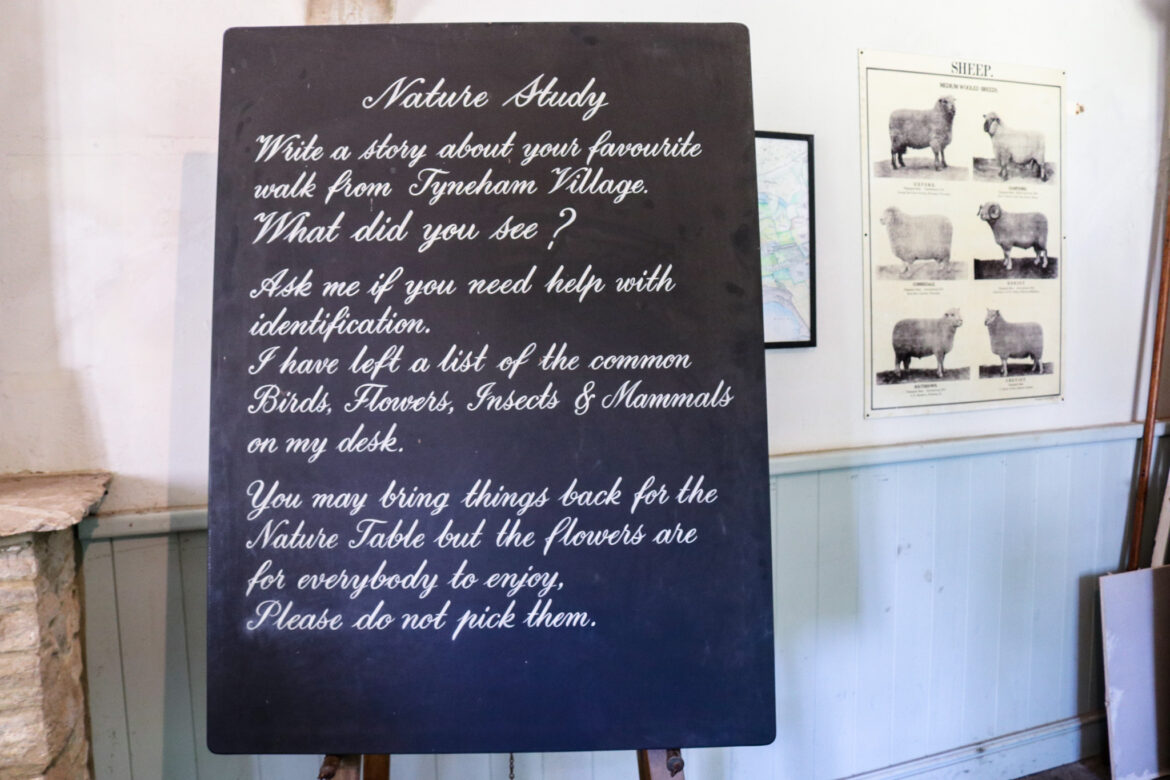
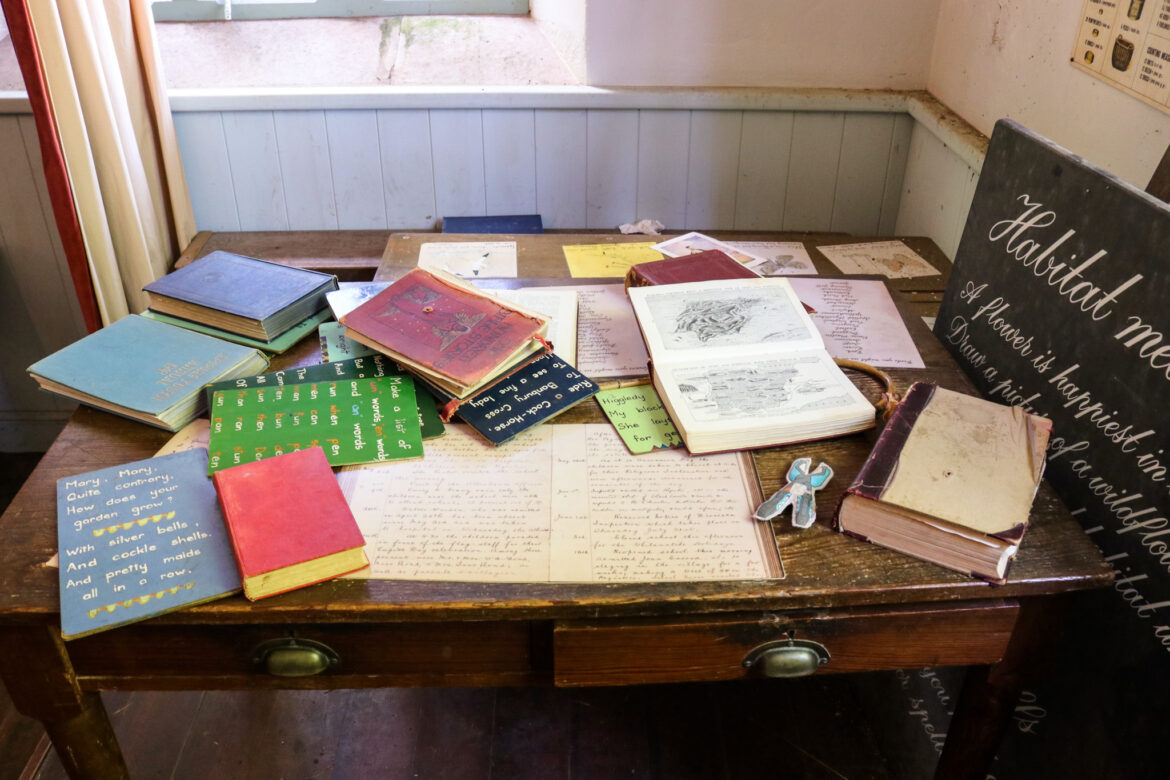
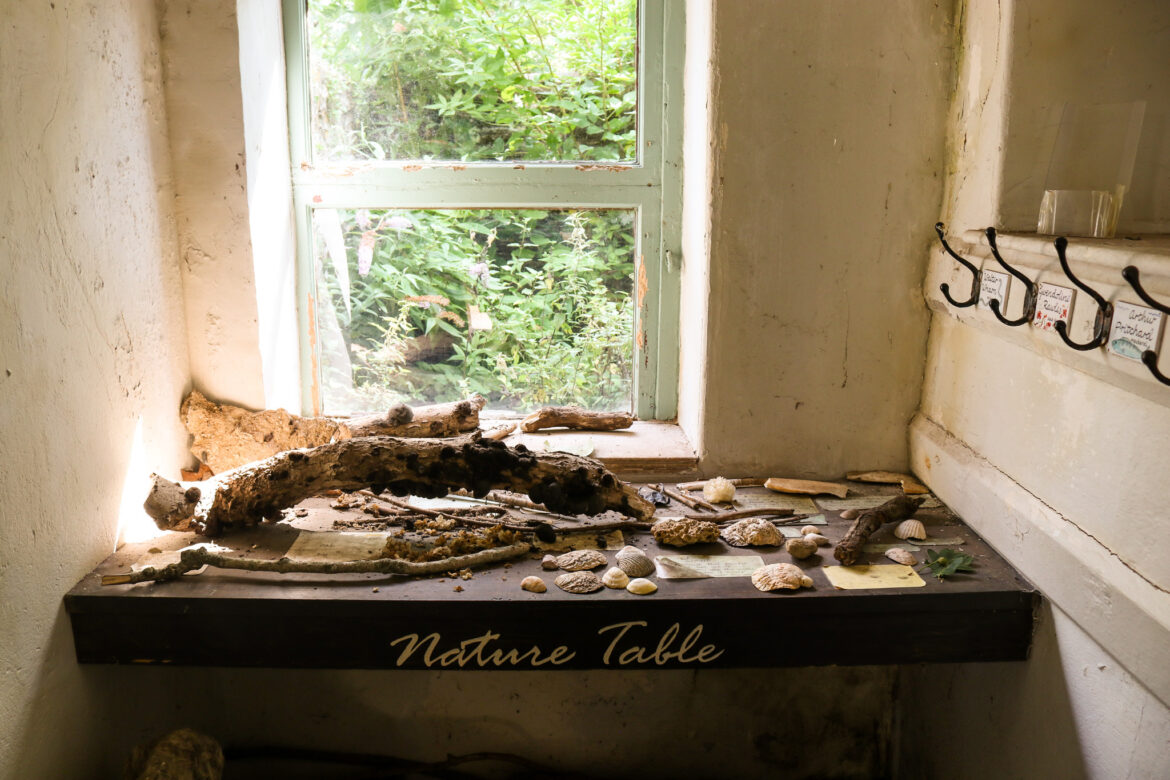
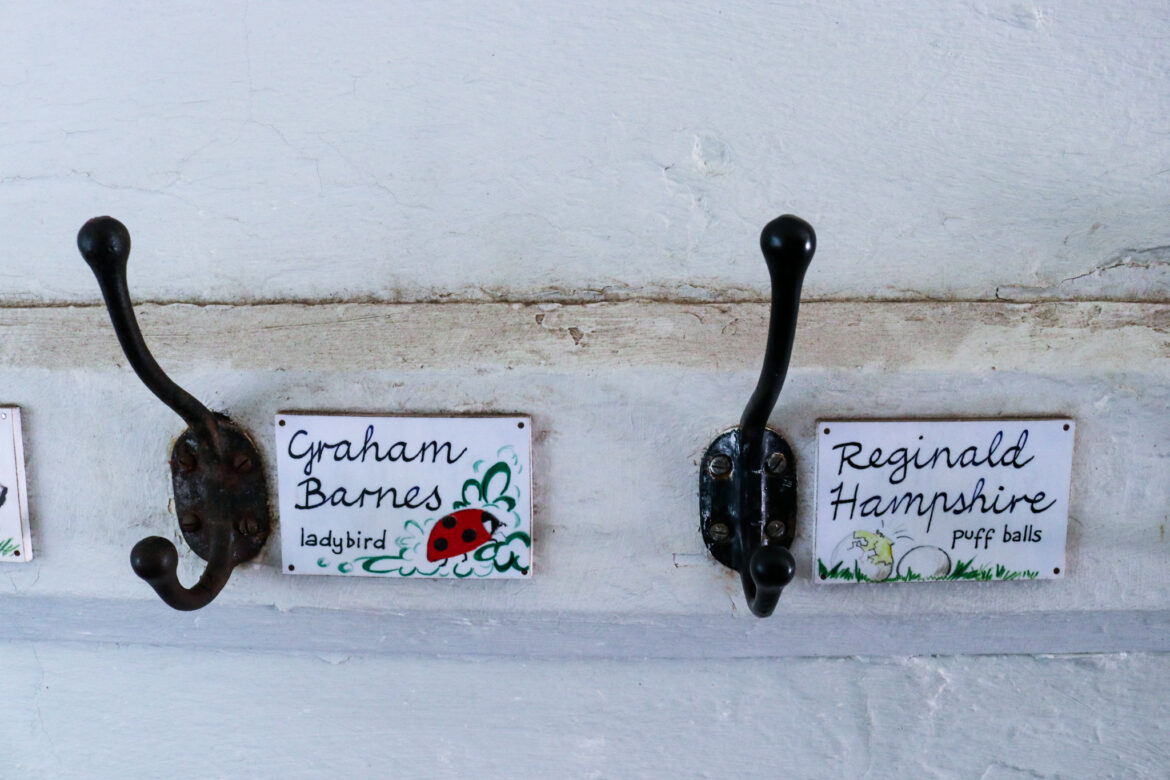
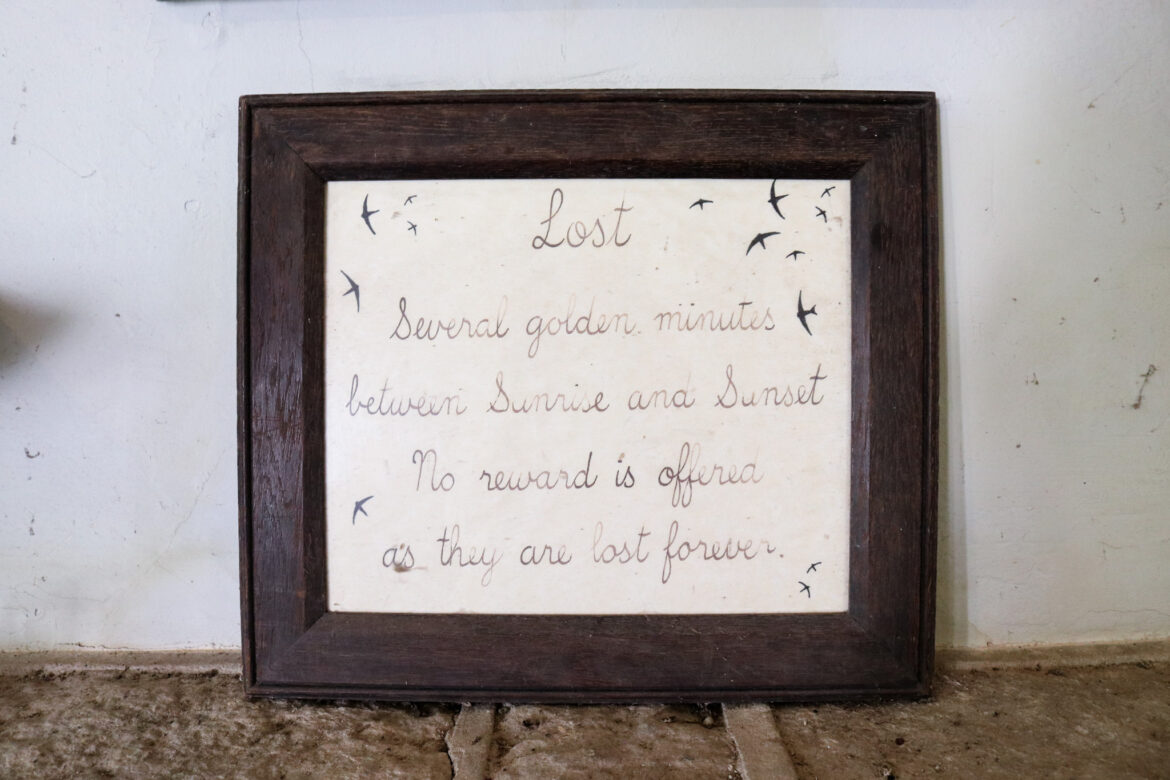
St Mary’s Church
The church in Tyneham dates back to the 13th Century, although parts of it were added to in the 19th Century. It now primarily serves as an exhibition space for visitors to learn more about Tyneham’s past.
Some parts of the church have been moved to other churches nearby, such as the church in Steeple, which you may have driven past on your way here – St Mary’s organ and church bell have found a new home at Steeple’s St Michael & All Angels, which is itself around 1,000 years old.
You’ll find displays about the village itself and the people who lived here along with Tyneham’s farming history, its connection with the Bond family and, poignantly, a nod to the message pinned to the church’s door by Tyneham’s residents the day they left.
Find a carousel of postcards on your way out of the church, which you can purchase for a small donation as a souvenir of your day.
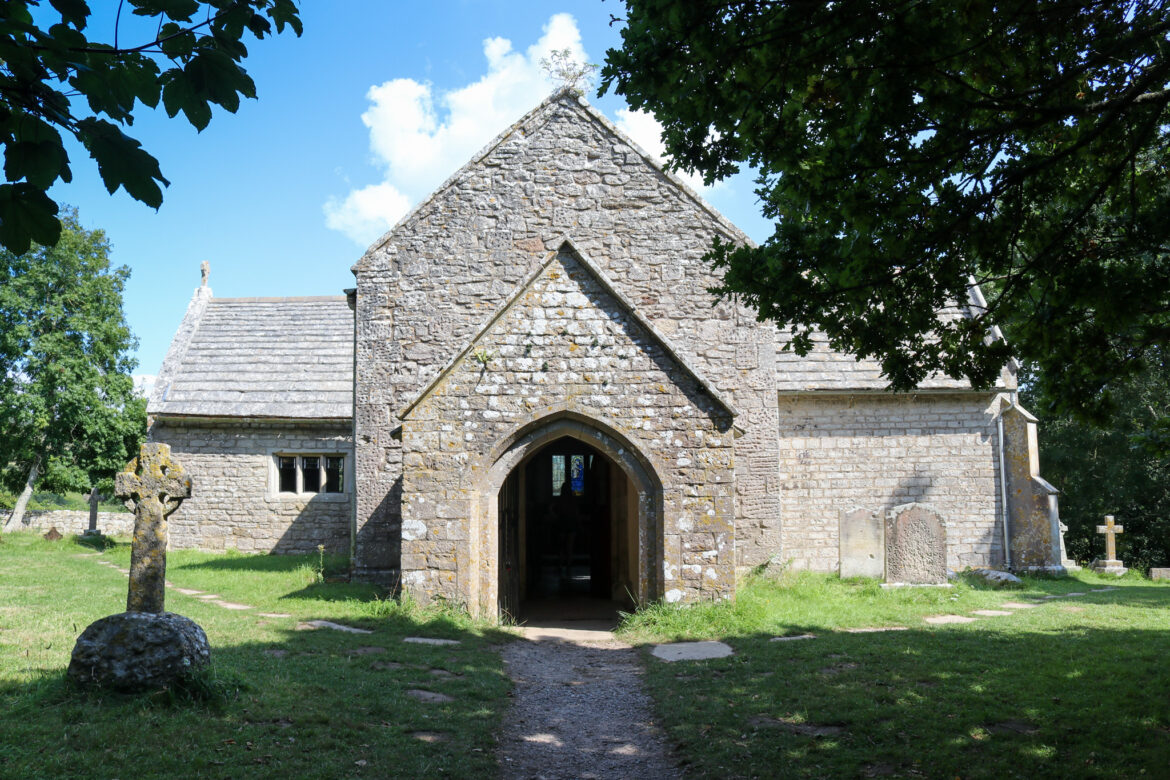
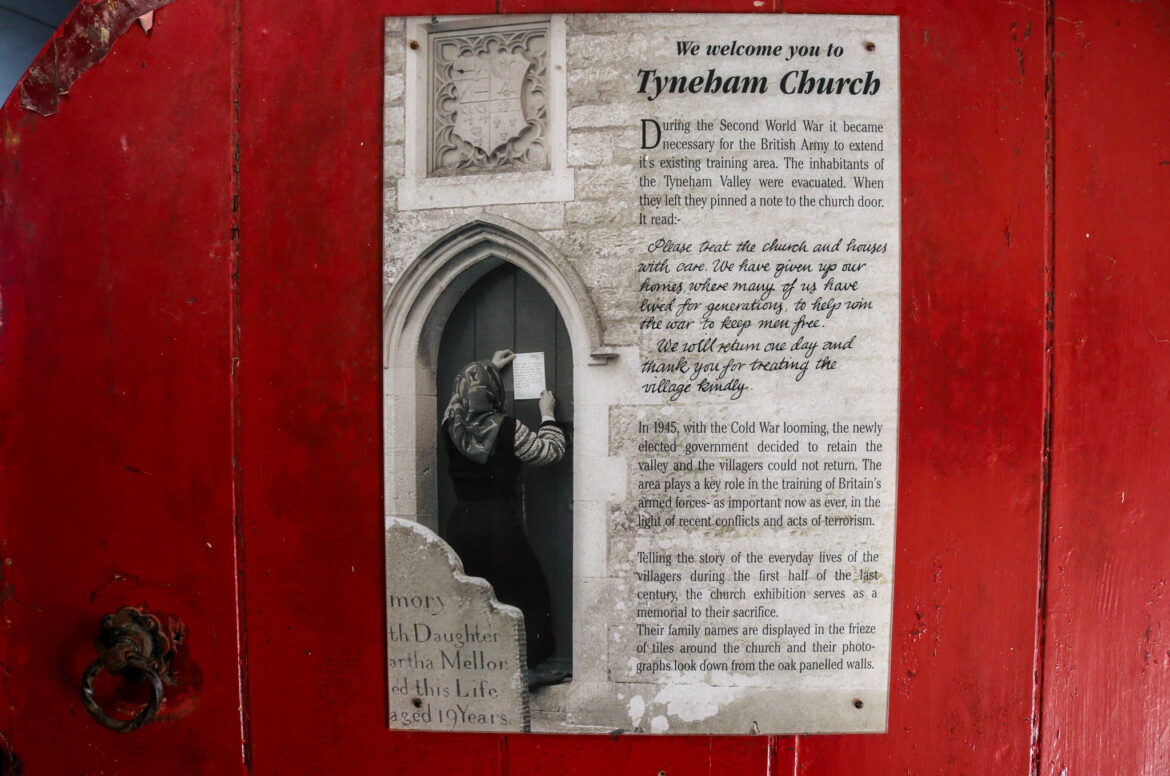
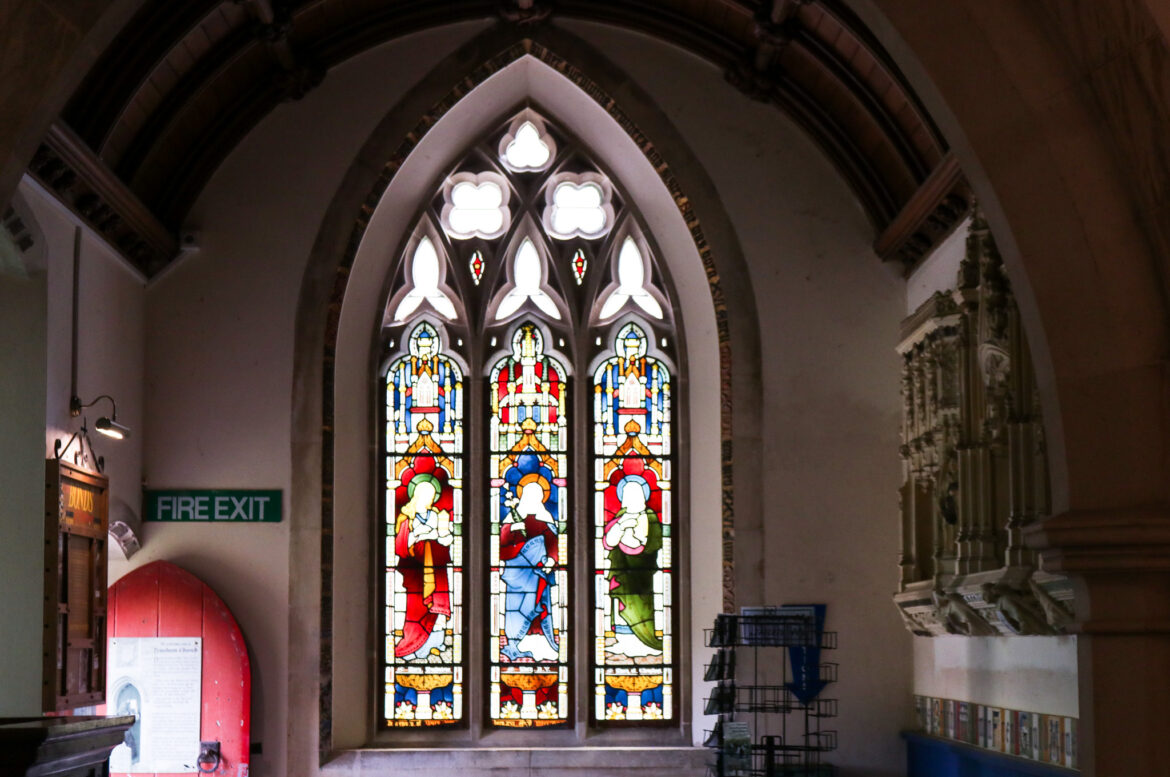
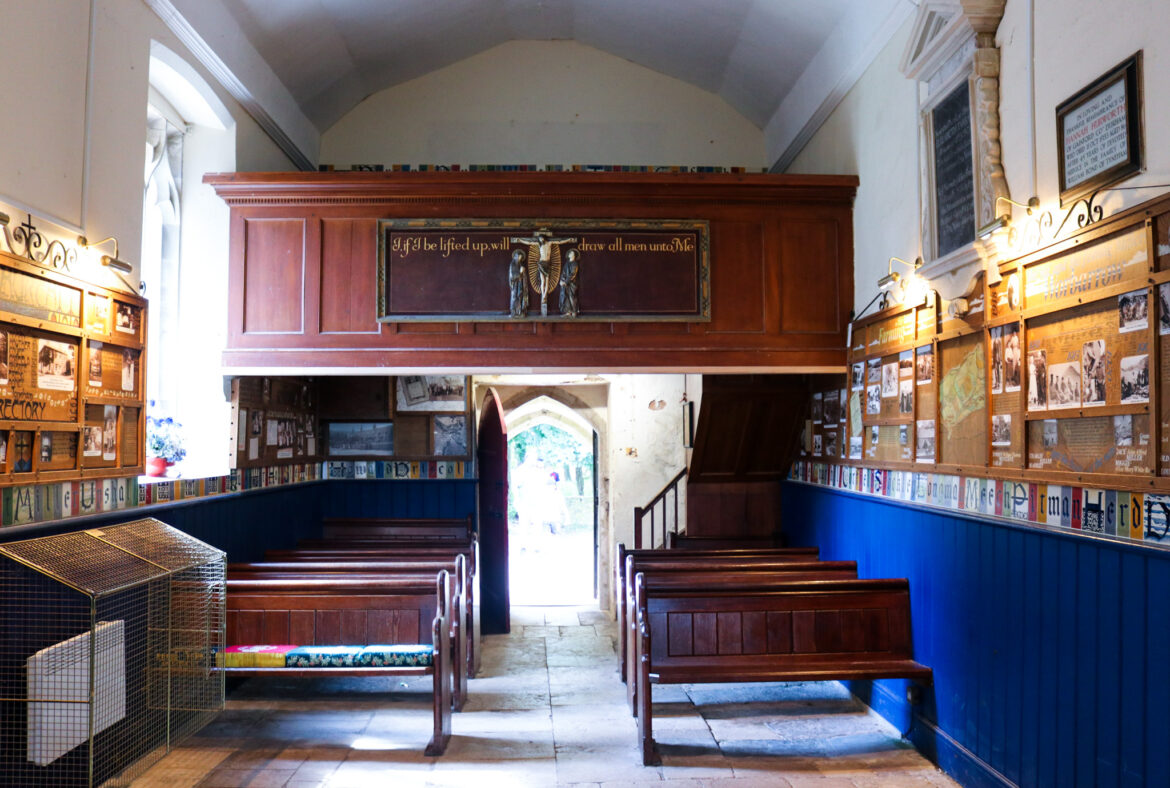
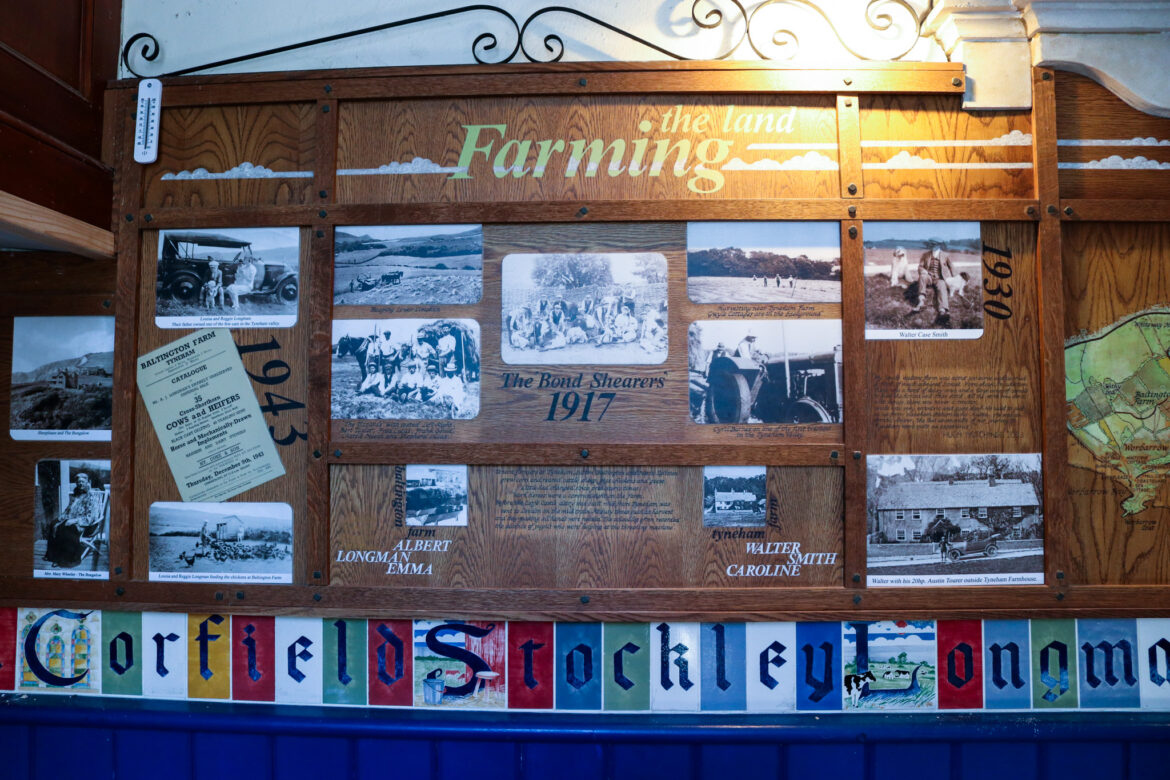
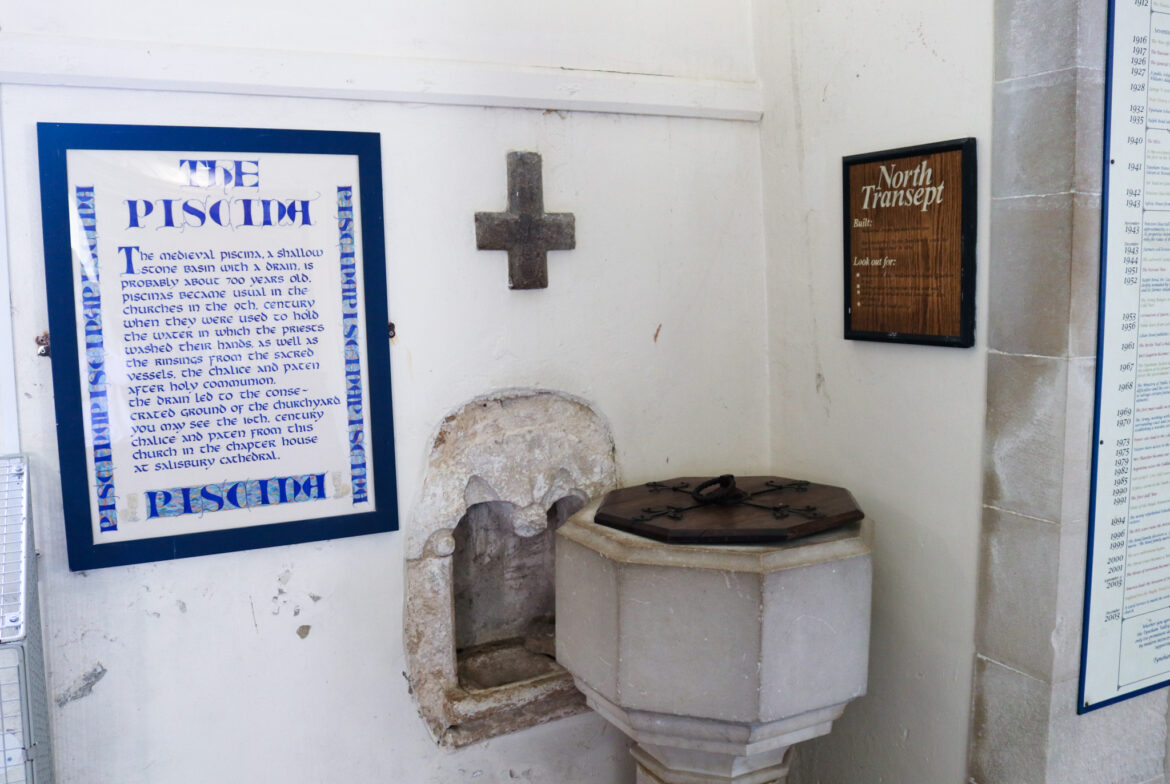
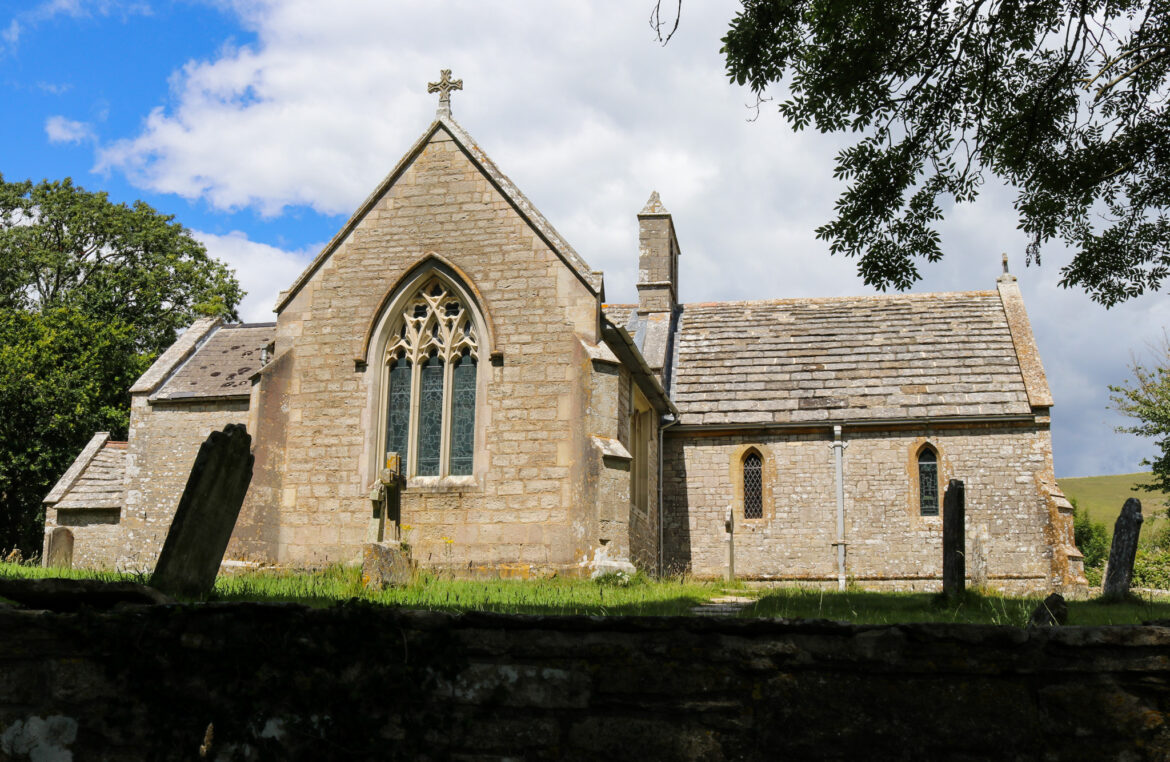
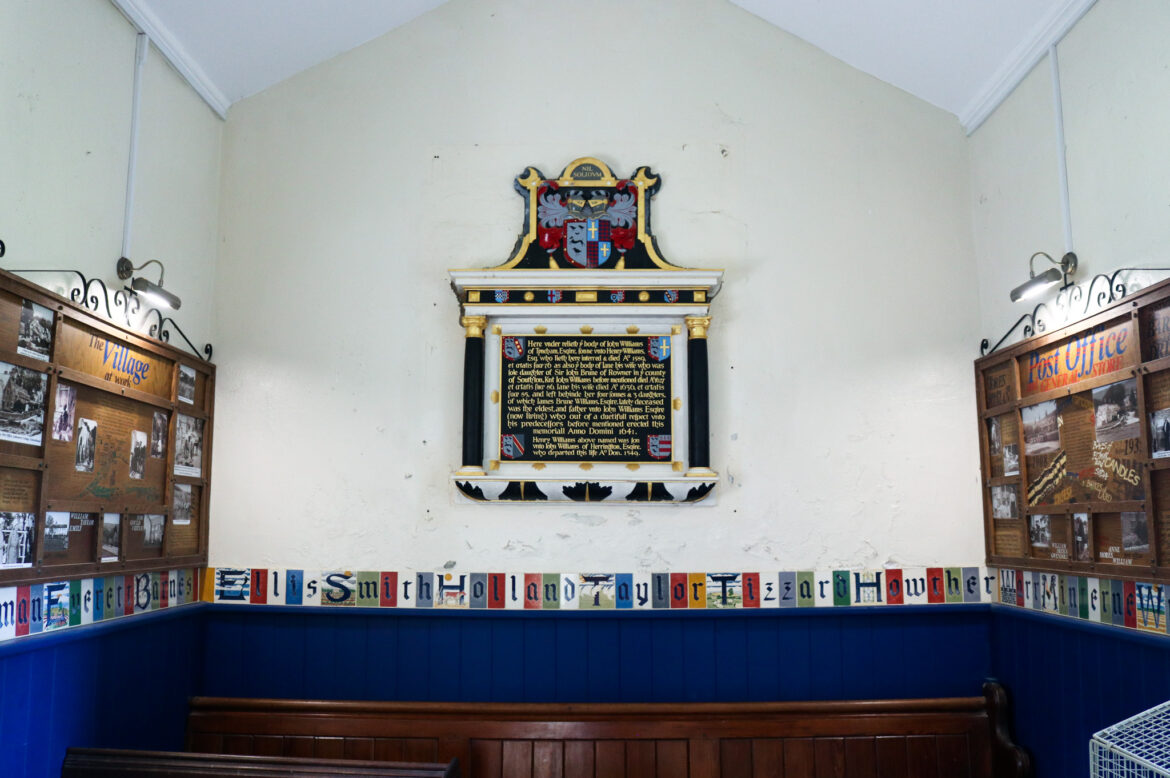
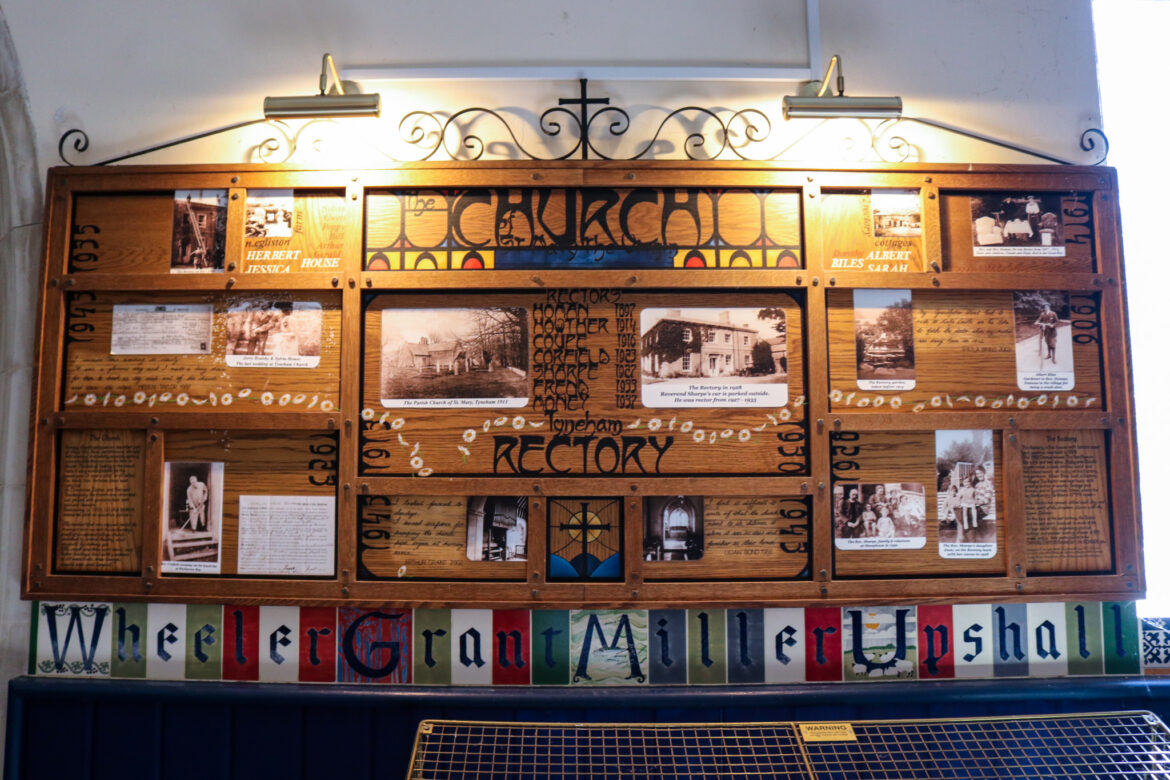
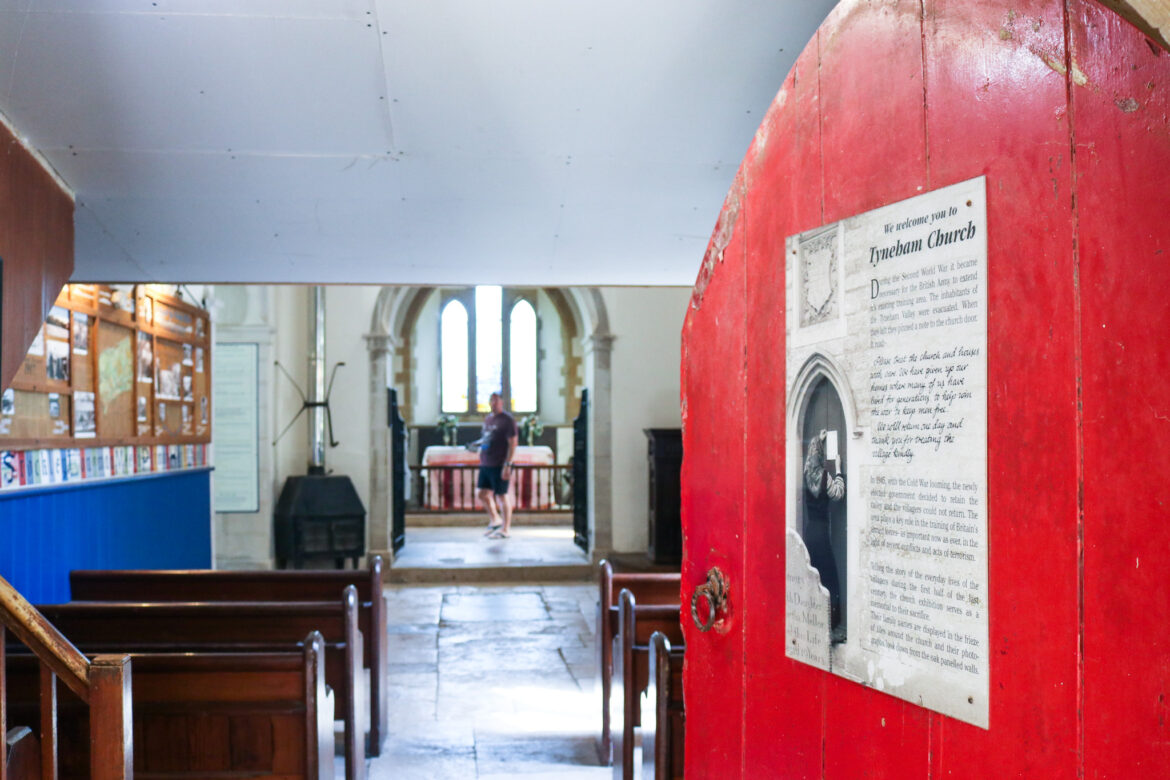
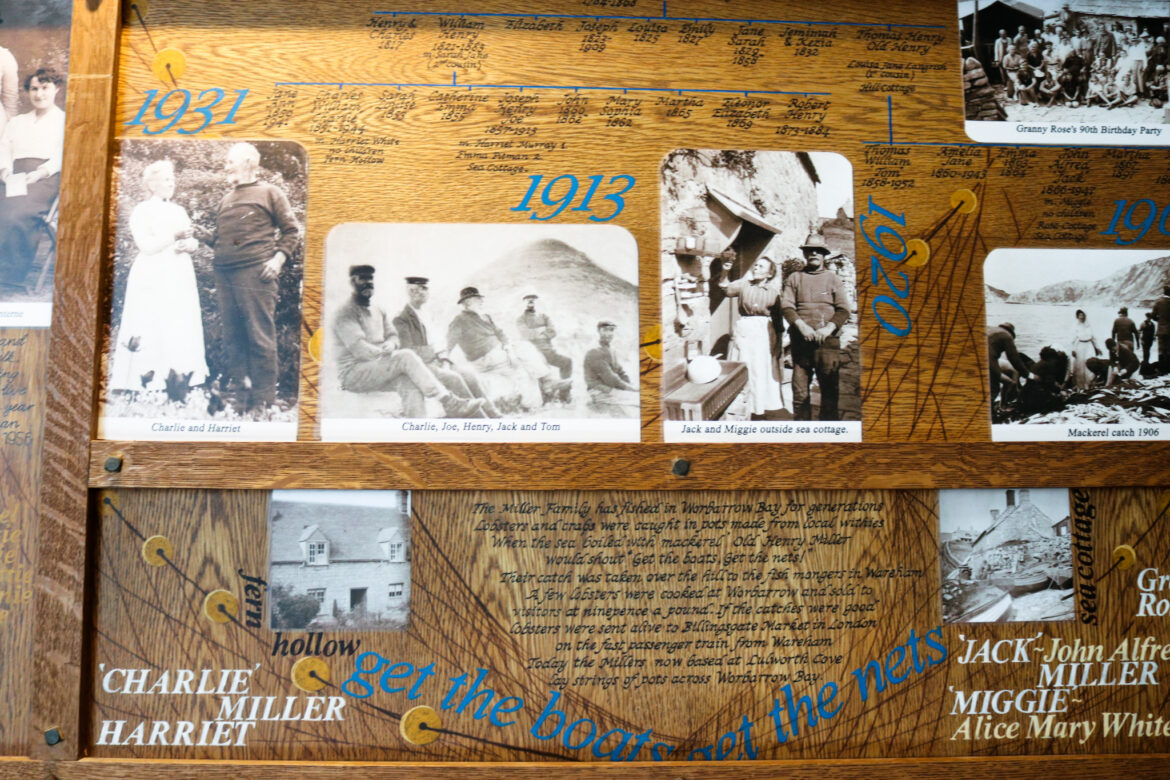

Tyneham Farm
A short walk from the village will lead you to the Tyneham Farm area, much of which is just as it was when it was evacuated, with original farm machinery on display and a history barn and storyboards to explore.
There is also a unique outdoor exhibition of WWII memorabilia in this area, set into the walls – a reminder of how closely the Army’s and the villagers’ histories are linked.
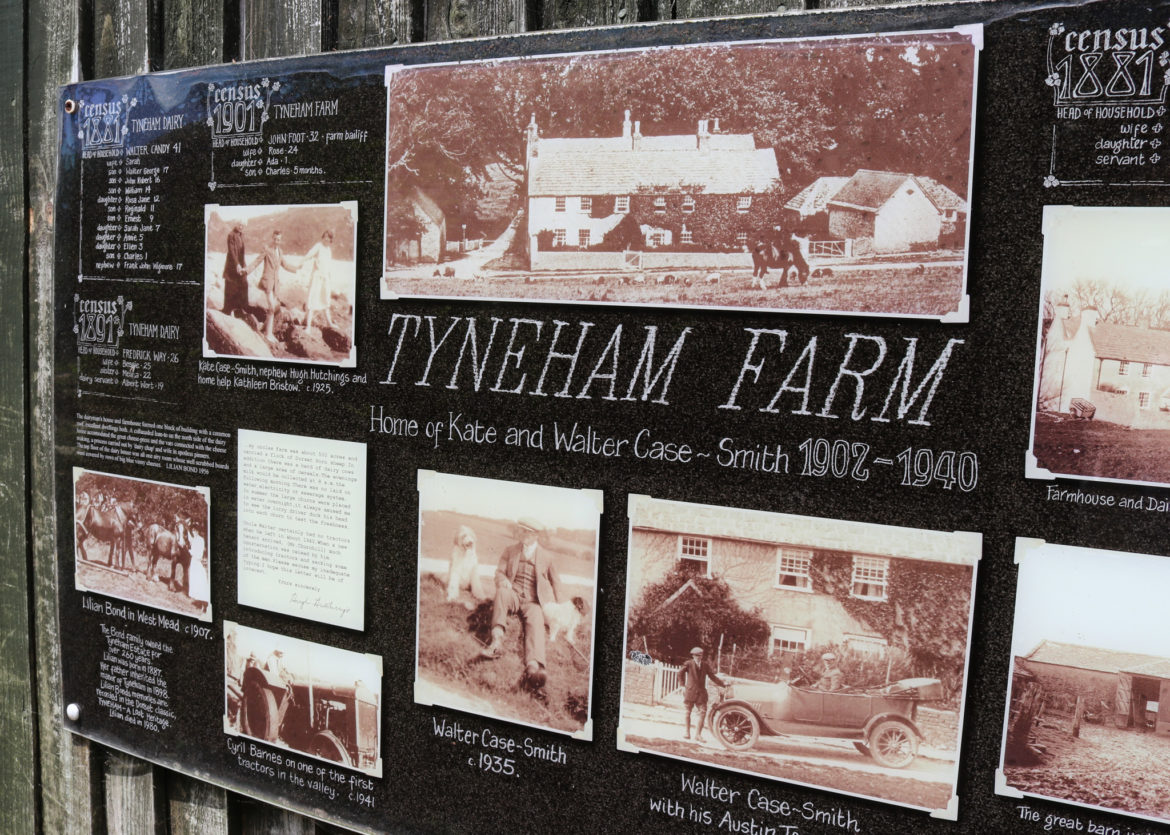
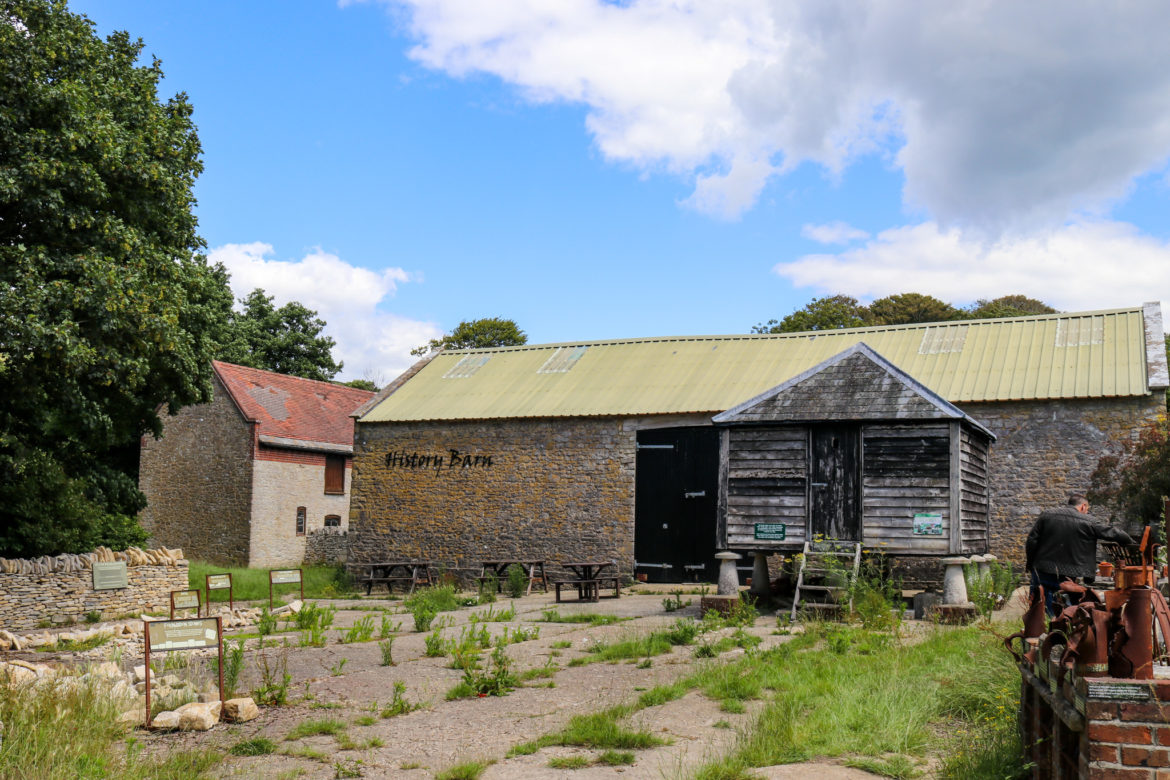
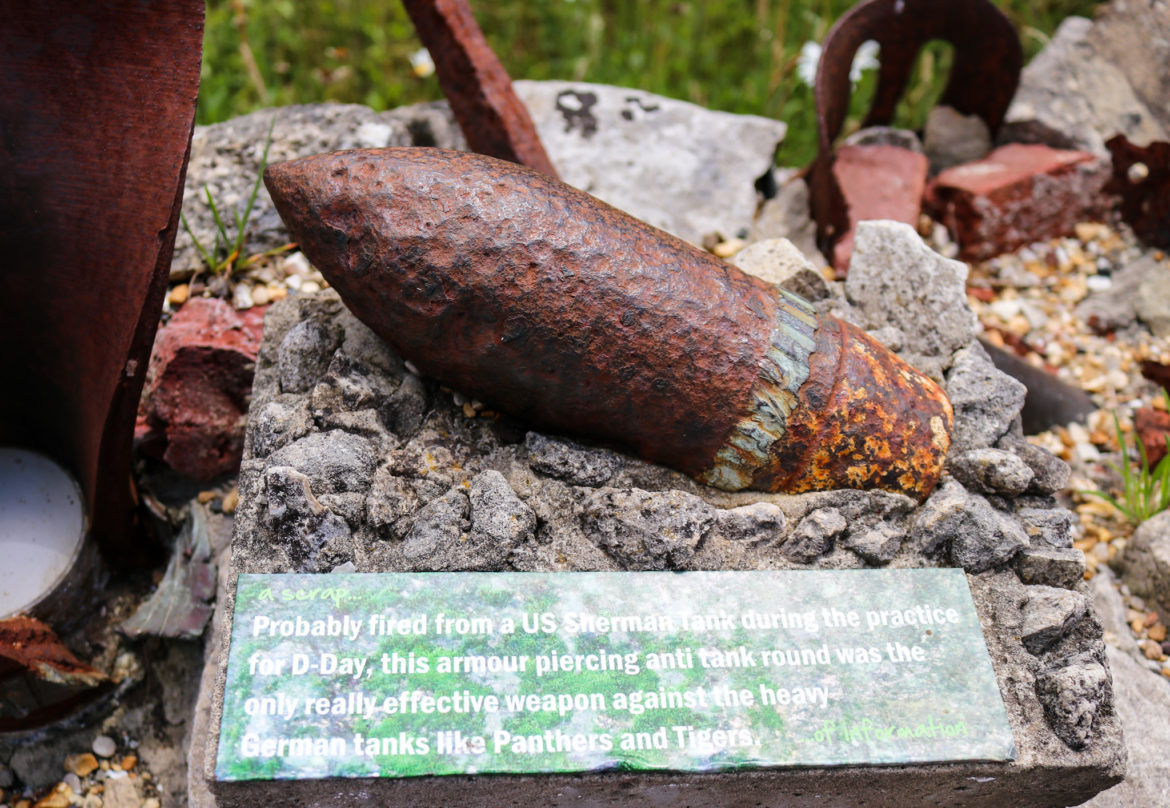
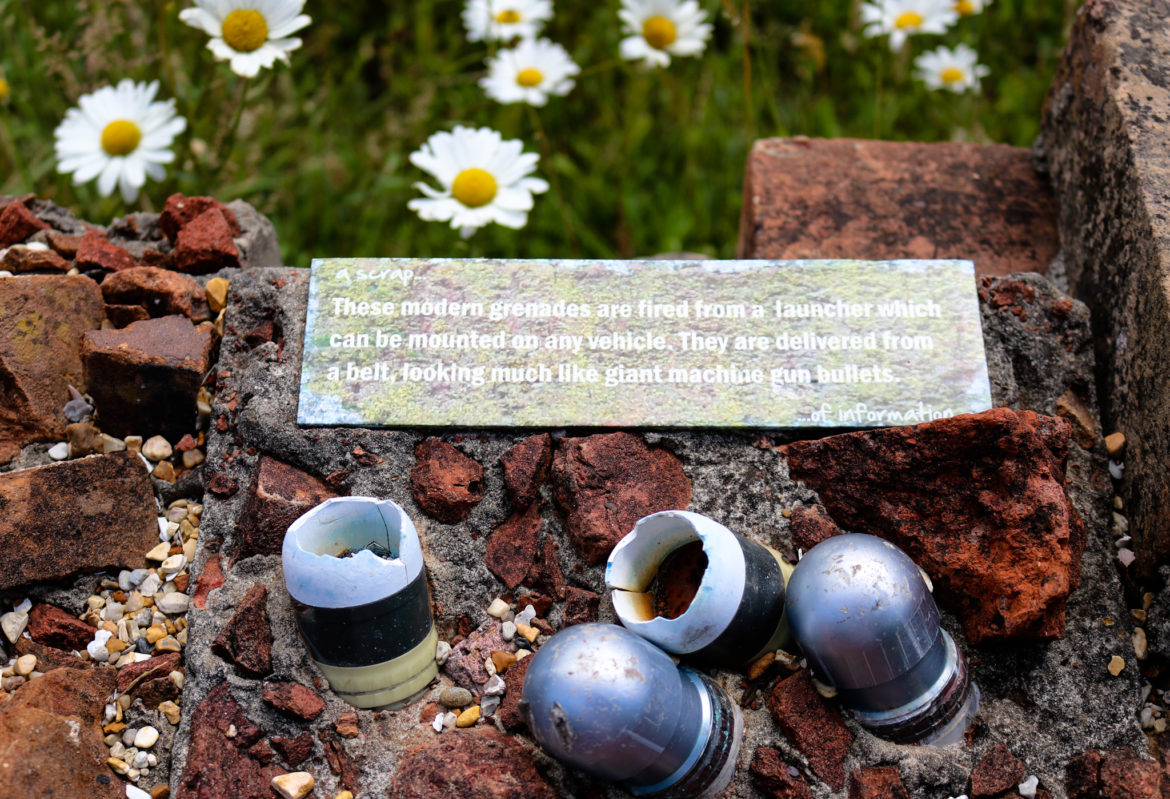
Facilities
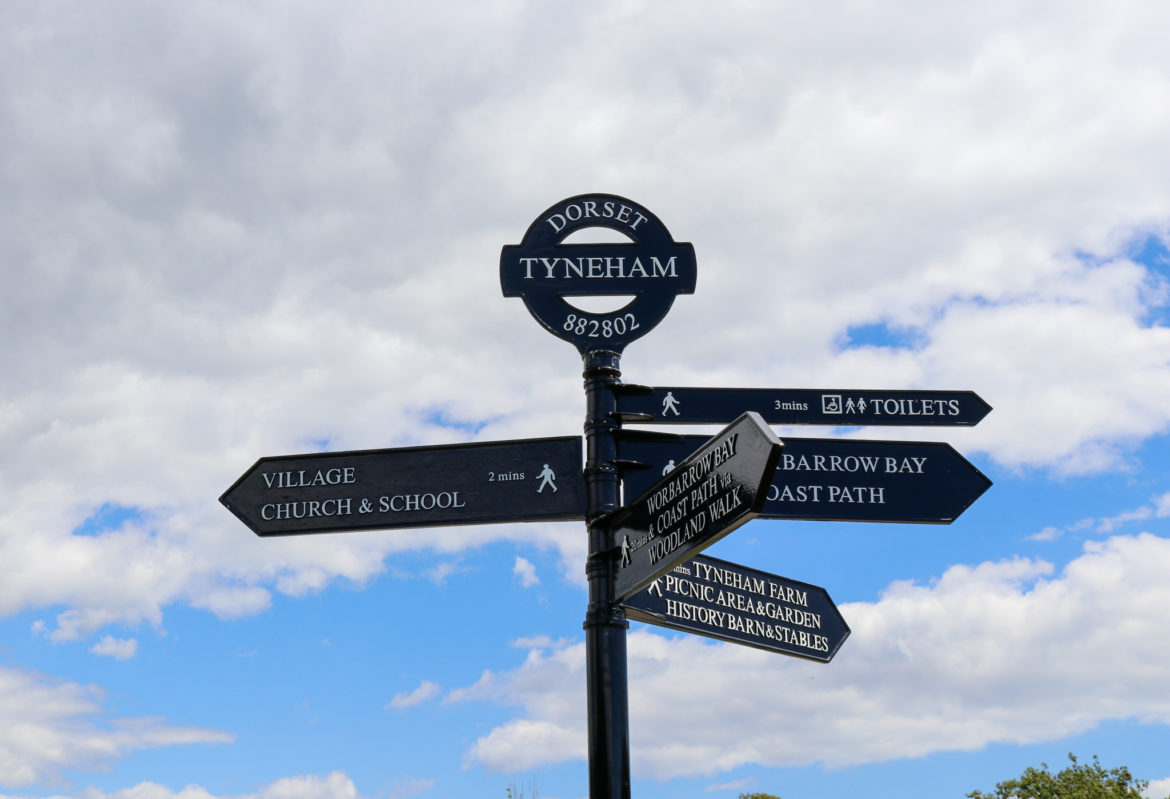
In keeping with the history of the village, facilities at Tyneham are limited.
Toilets (including disabled access) are situated at Tyneham Farm in the old milking parlour building.
Picnic tables – There are various picnic tables dotted around the car park area and near the history barn.
Refreshments – The nearest places to grab a bite to eat are The New Inn in Church Knowle and Clavell’s restaurant in Kimmeridge, which are both around a 10-minute drive from Tyneham. In the summer there may be a small catering van, such as that provided by The Salt Pig, serving hots & cold drinks and light savoury and sweet snacks
Access and restrictions
Opening times
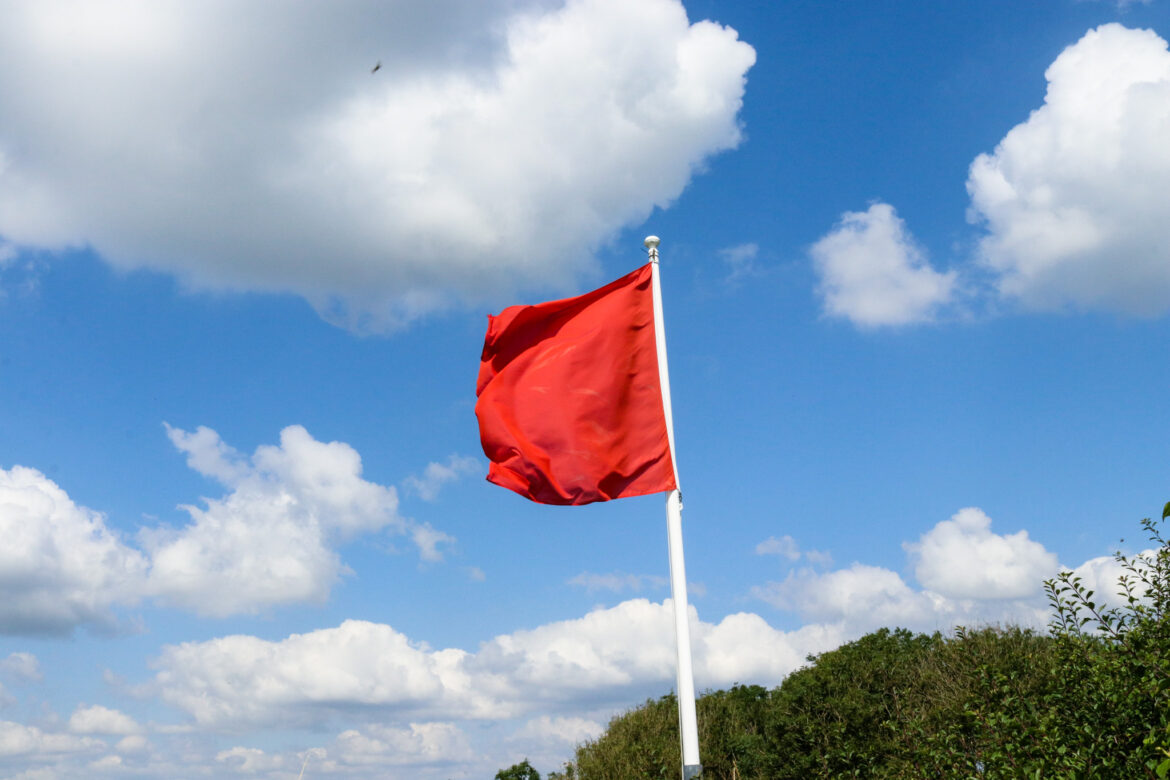
Due to Tyneham being part of the Lulworth Ranges – a British Army training area – access is restricted to times when no firing is taking place (typically weekends and bank & school holidays).
Opening times can be found here: www.tynehamopc.org.uk/visiting-tyneham/opening-times/
Live firing timings can change, however, so it’s always best to check in advance of visiting. You can do that by calling the following number, which gives live automated updates: 01929 404714
Restrictions
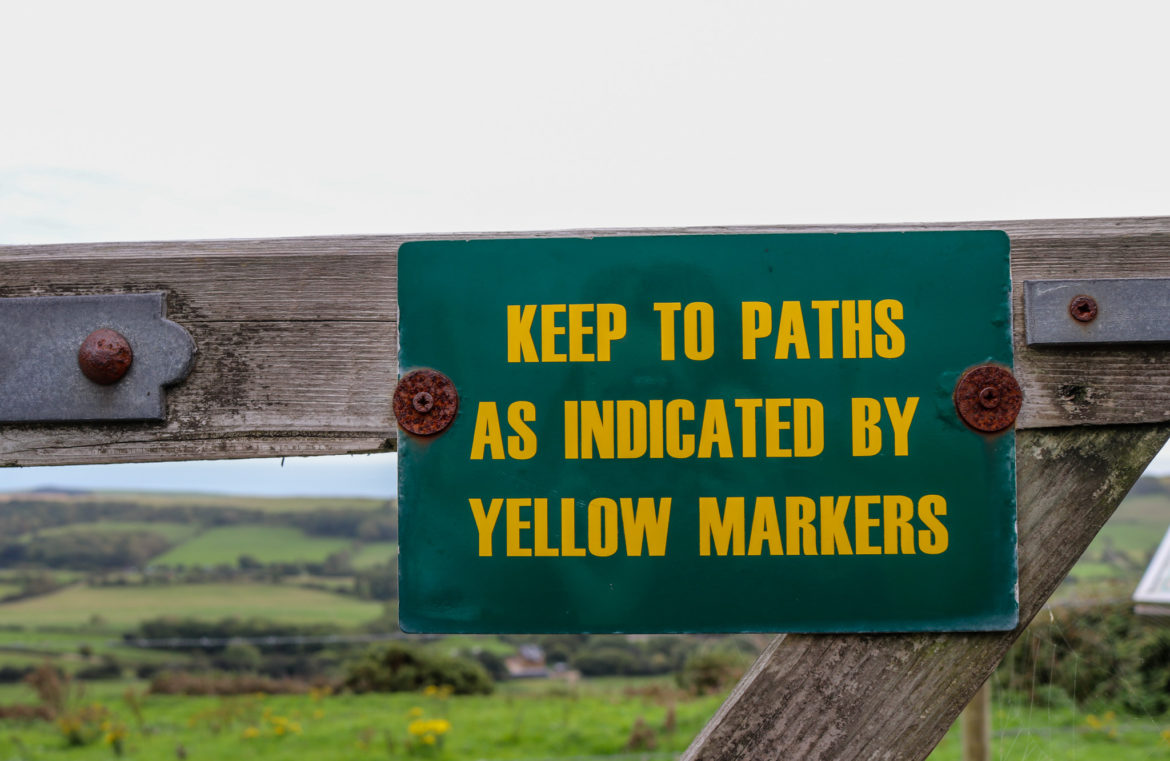
Some areas of Tyneham are out of bounds, so it’s important to keep to the waymarked paths.
Dogs can visit Tyneham village on a lead and are welcome on the nearby beach year-round.
How to get to Tyneham
Postcode for your SatNav: BH20 5QN
From Swanage
Turn left off the A351 at Corfe Castle towards Church Knowle. Follow the road past signs for Steeple and Kimmeridge.
You’ll eventually climb a steep hill with stunning views across the Purbeck Hills (there is a viewpoint at the top).
Signs to Tyneham will lead you down a road to the left to Tyneham car park.
From Wareham
If you’re coming from Wareham, leave the A351 toward Grange Road (the first turning on your right after the Worgret roundabout on the Wareham bypass) and follow the signs to Tyneham.
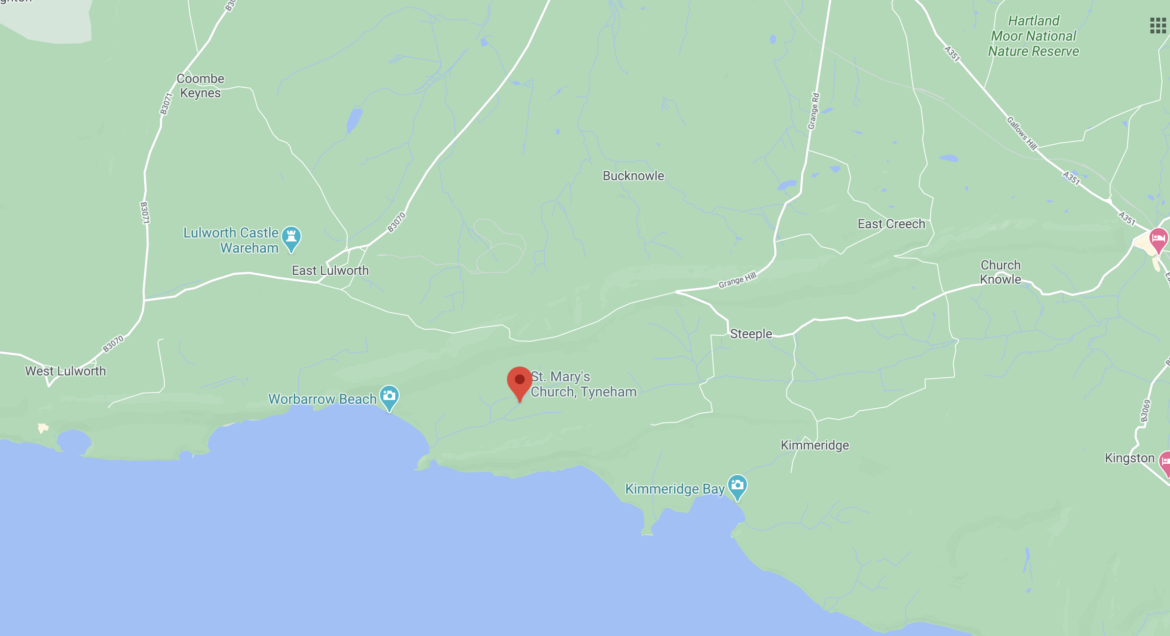
Parking
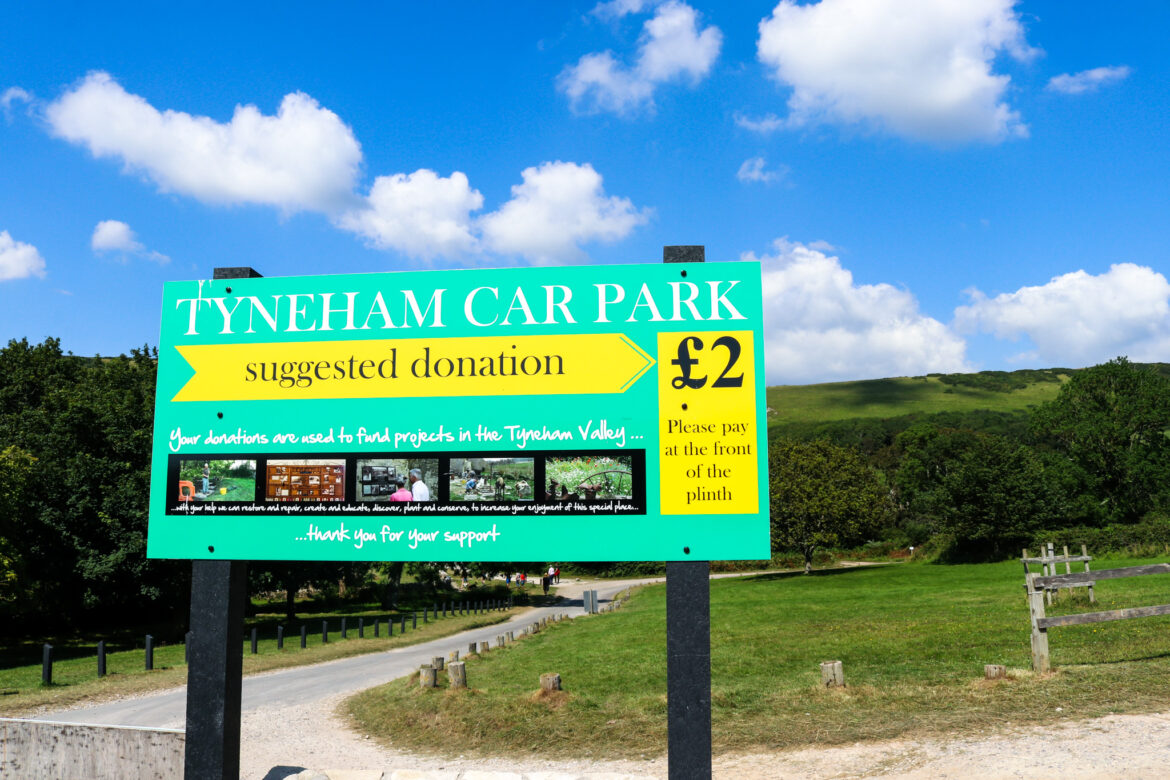
There is a large car park by Tyneham village, operating a donation box system.
A donation of £2 is suggested and all money goes toward the conservation of the village and surrounding area.
The car park is situated in a large field, which also doubles as a popular picnic area, with seating by the village pond and towards the woodland walk.
Note that access for coaches and minibuses must be pre-arranged by calling: 01929 404712. This is due to the narrow roads leading down to Tyneham affecting access to larger vehicles.
The history of Tyneham village

In 1943, the residents of Tyneham were told they had to evacuate the village so the British Army could use the area as a training ground ahead of the imminent D-Day invasion.
One month later, and just six days before Christmas, all 225 villagers left their homes as part of the war effort.
They left this note, pinned to the door of the church:
Please treat the church and houses with care; we have given up our homes where many of us lived for generations to help win the war to keep men free. We shall return one day and thank you for treating the village kindly.
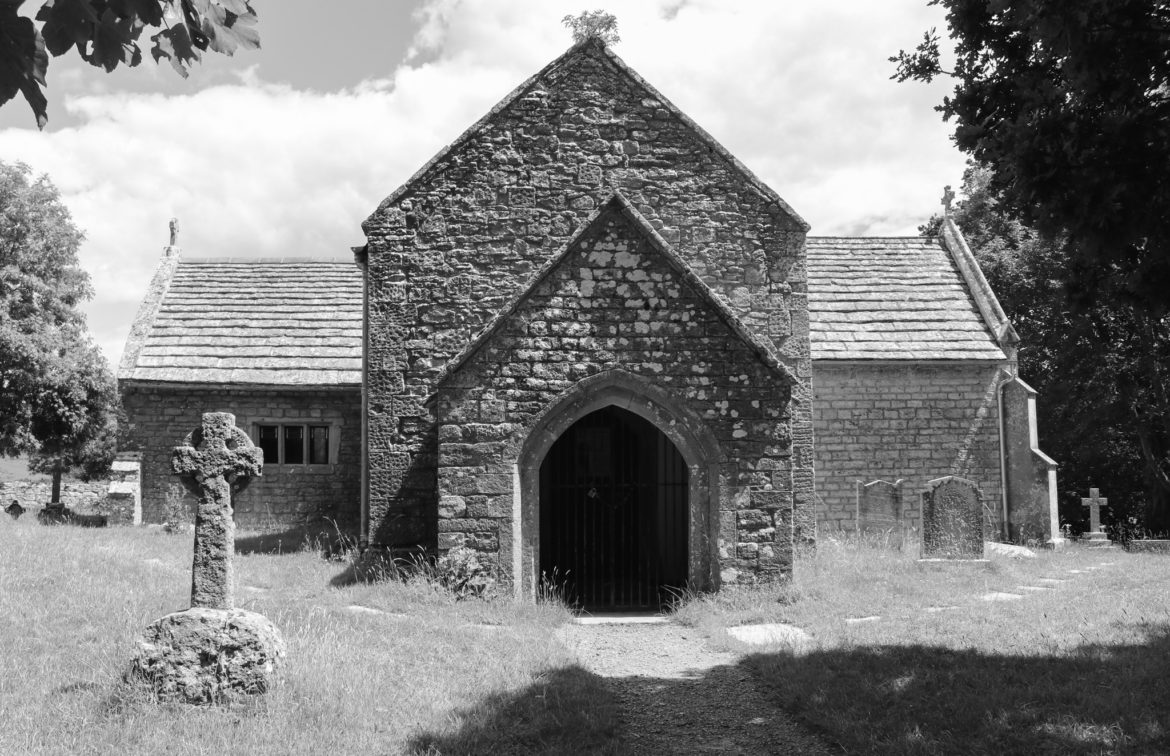
‘No small sacrifice’
The Government, in its letter to the people of Tyneham, acknowledged that what they were being asked to do was huge.
“The Government appreciates that this is no small sacrifice which you are asked to make, but they are sure that you will give this further help towards winning the war with a good heart.”
However, the villagers never returned.
What was initially a temporary arrangement became permanent in 1948 when a compulsory purchase order was made by the Ministry of Defence on the village of Tyneham and its surrounding area, which was to become an important military training area, and which is still in use today by the Armoured Fighting Vehicles Gunnery School.
Residents were relocated to nearby villages. However – having initially believed they would be back in Tyneham after the war had ended, and then learning they could not – some campaigned to return to the village they had grown up in. But it was not to be.
Arthur Grant was the last resident of Tyneham to die in 2010. Before he passed away he shared his memories of the village he lived in as a boy:
A community in decline
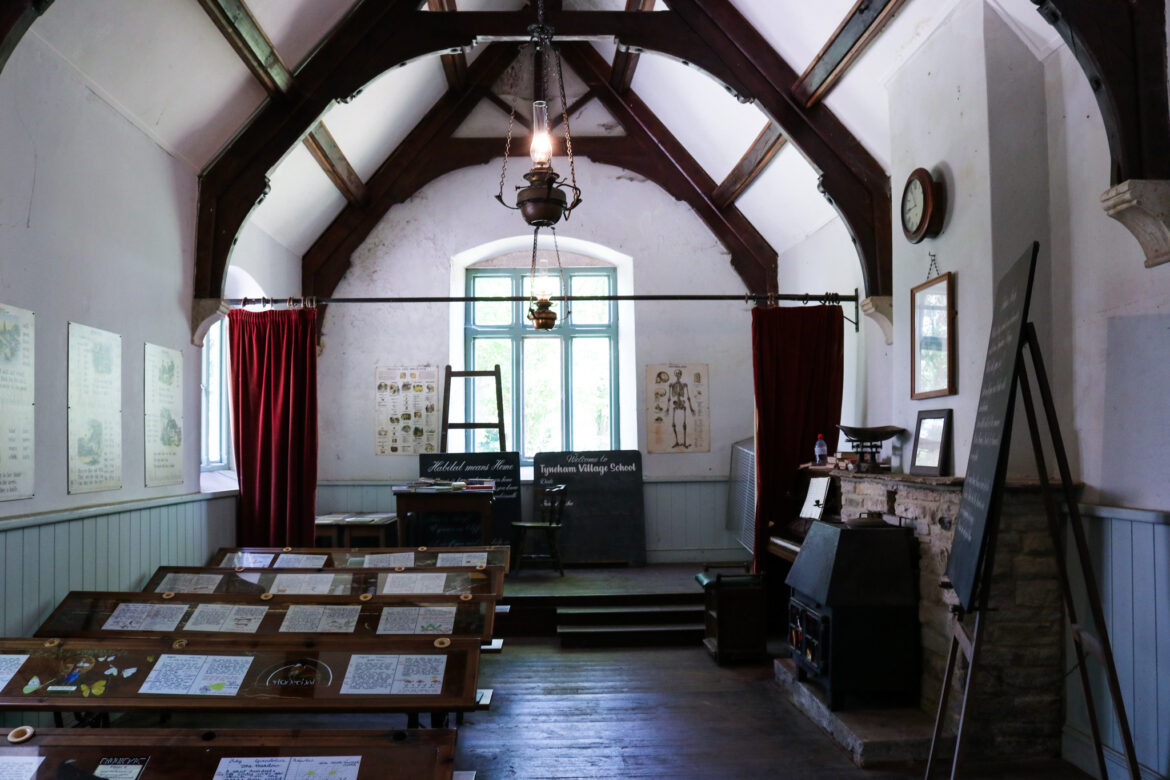
However, for some villagers it was a case of head over heart and they embraced their new lives as, whilst they missed their old homes, they were now living much more comfortably – having electricity for the first time and hot, running water; no longer needing to head to the village pump every day.
Life hadn’t always been easy in Tyneham, and the schoolroom had already closed in 1932 due to lack of numbers.
And local, traditional ways of life were being affected by modernisation too – the increasing use of the motorcar opening doors to new work opportunities further afield, and industries such as fishing hit by the introduction of bigger trawler ships at the larger ports nearby.
A new lease of life
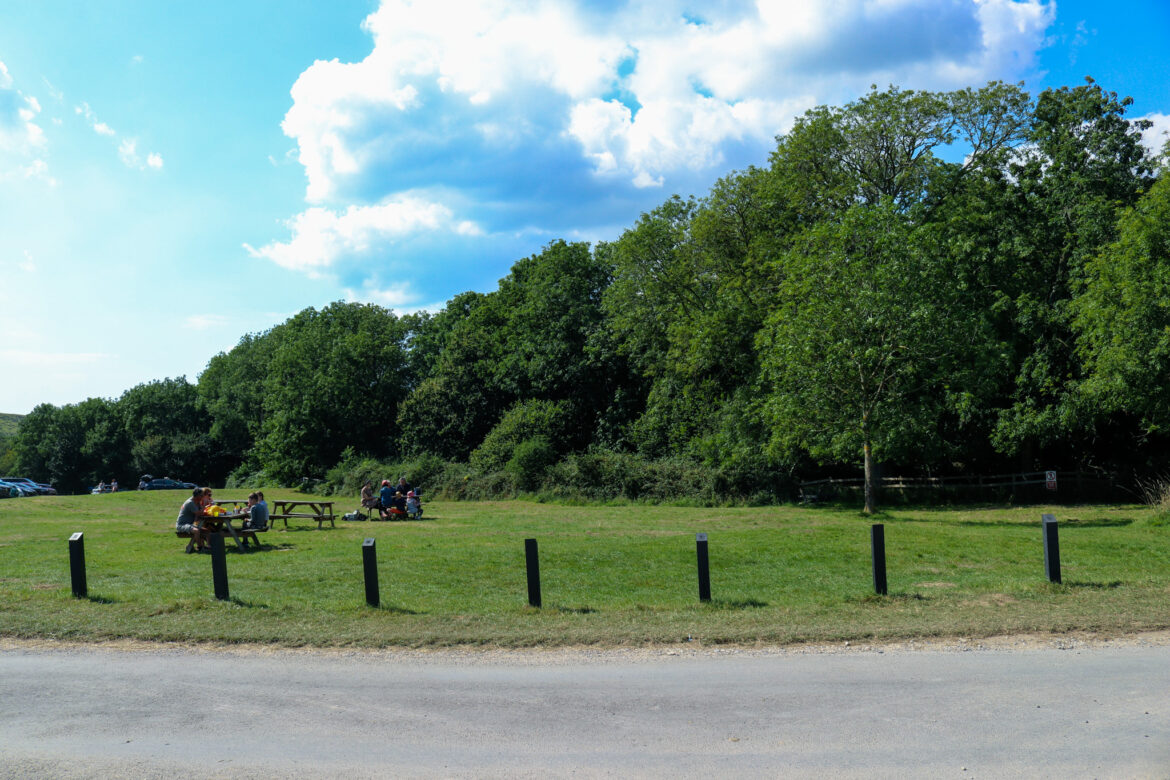
However, the magic of that very local and simple way of life stayed with some residents, who always longed to return and who continued to campaign. Perhaps their sadness was allayed slightly by the compromise they struck with the Ministry of Defence – to open Tyneham up to the public for a certain number of days a year, giving the village frozen in time a new purpose.
Tyneham Village has remained just as it was after the war. It is distinctly untouched and natural compared to many tourist spots in Britain – some argue that Tyneham’s poignant history has in fact helped stave off the potential development and commercialism of a beauty spot, as well as preserve the memory and the stories of the people who lived here and a way of life lost to us in a modern world.
And, as much of the year Tyneham remains untouched by the comings and goings of normal human activity, wildlife is allowed to thrive uninterrupted.
Wildlife
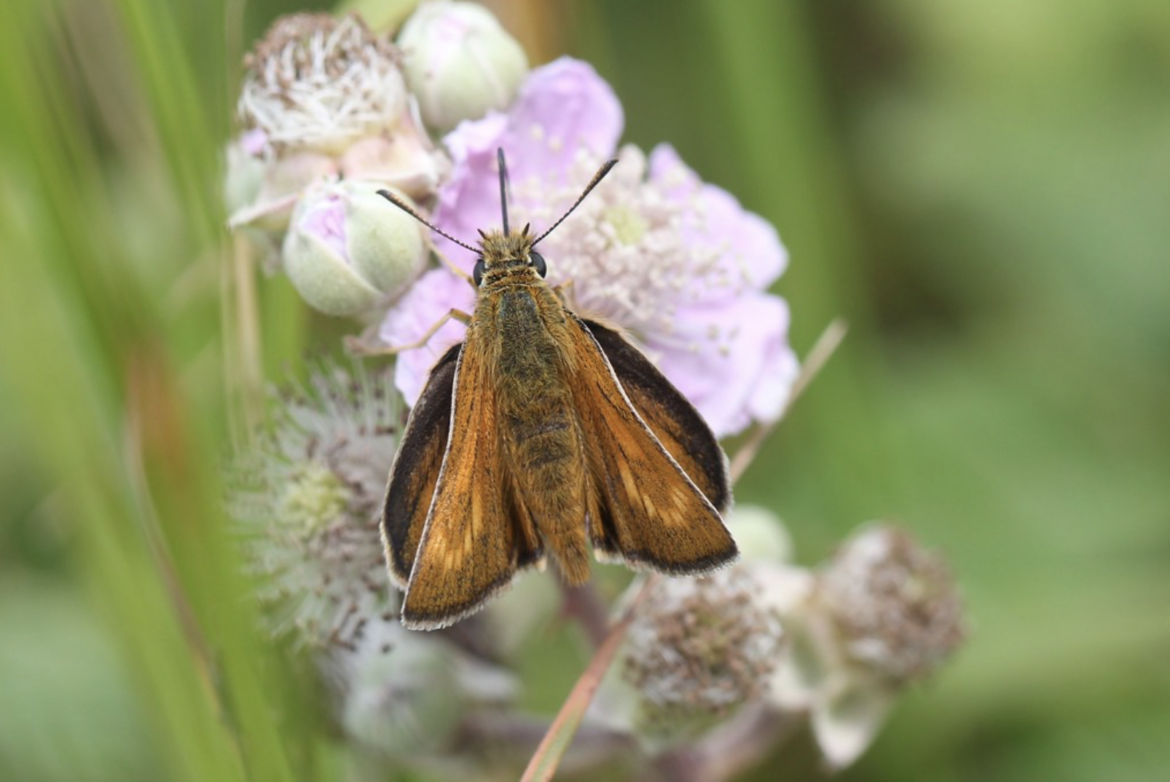
From wild garlic in the woodland and lichen growing on the old buildings, to dragonflies humming above the village pond, a sense of Tyneham being home to wildlife is all around you as you walk through this place, which has escaped both development through tourism and modern farming techniques.
The section of Tyneham Woods open to the public has an untouched, ancient feel about it as you wander beneath the ash, oak and sycamore trees.
Rabbits can often be spotted darting about in the undergrowth, and likewise sika deer and their young. And, depending on the time of year you may also spot butterflies such as the Lulworth Skipper and the Adonis Blue amongst the wildflowers allowed to grow in abundance, including orchids such as the pyramidal and bee orchids.
Tyneham in literature and on stage & screen
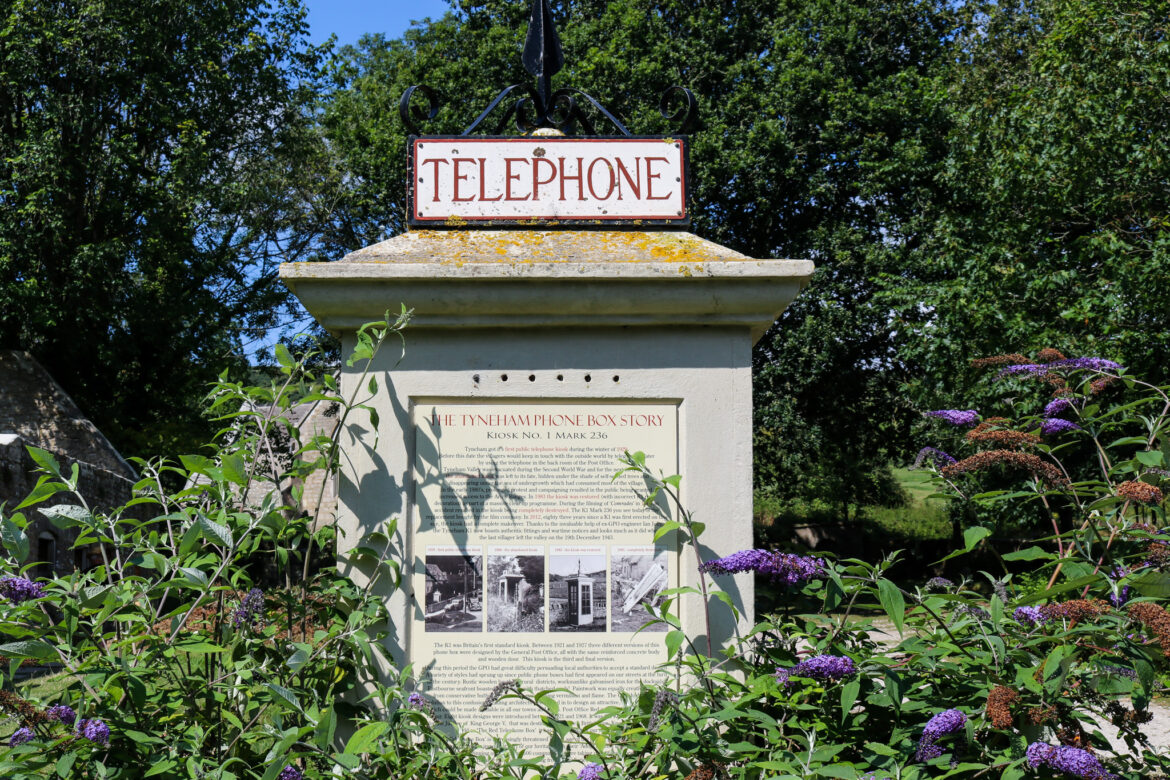
It’s not surprising that Tyneham has been the inspiration for writers and producers over the years, with its atmospheric setting and unique history.
Author Lorna Cook’s 2018 debut novel The Forgotten Village is partly set in, and inspired by, Tyneham’s history.
There has even been a musical theatre production based on the story of Tyneham’s residents. No Small Sacrifice was produced in 2013, on the 70th anniversary of the year the village was abandoned.
And filming for the 1986 movie Comrades took place here – and tells the story of the West Dorset-based Tolpuddle Martyrs: a group of six farm labourers now widely regarded as the founding fathers of the trade union and workers’ rights movements.
During filming, the village’s original telephone box was destroyed. The film company replaced it with the replica that is there today.
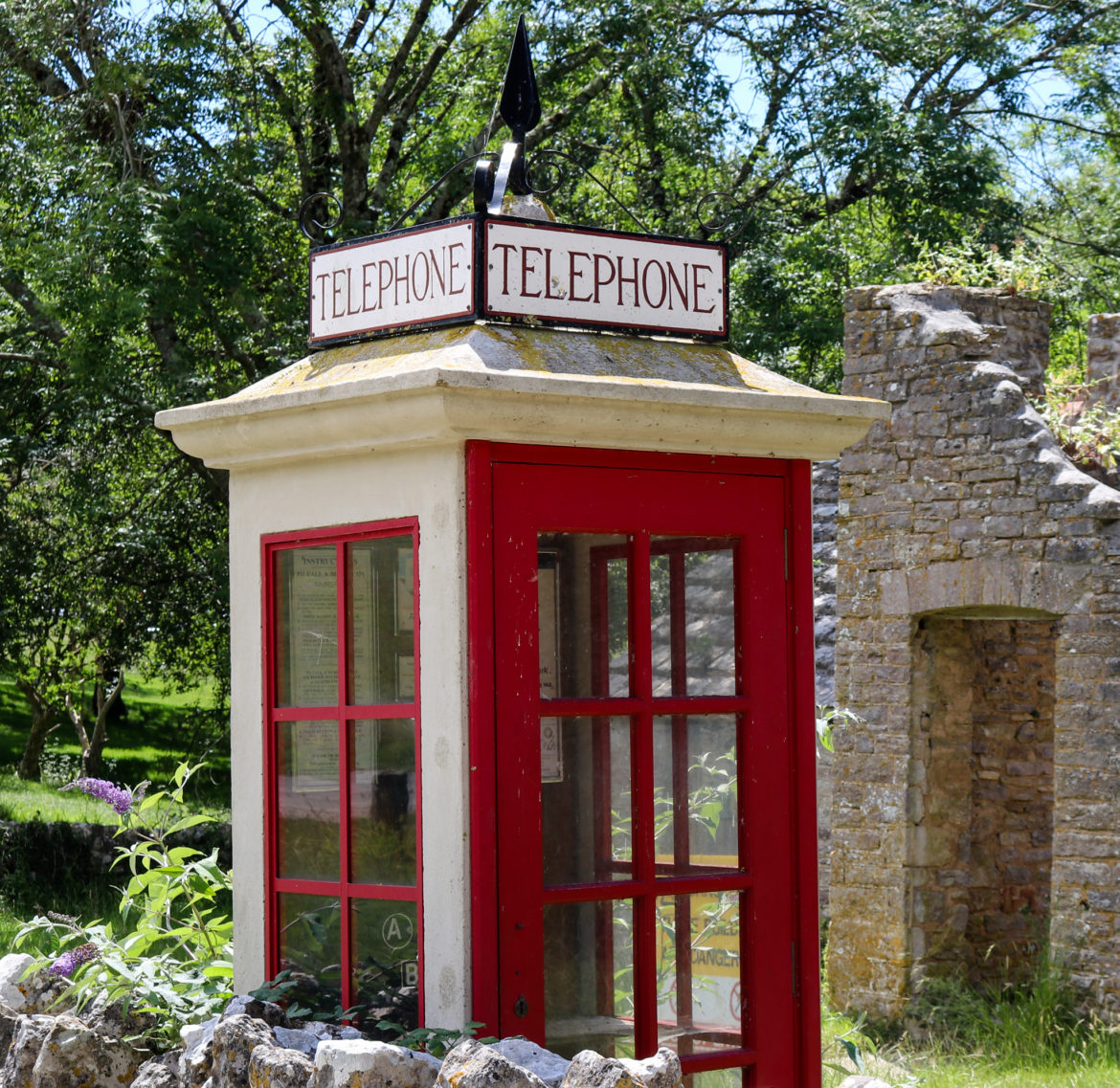
Purbeck’s other abandoned village
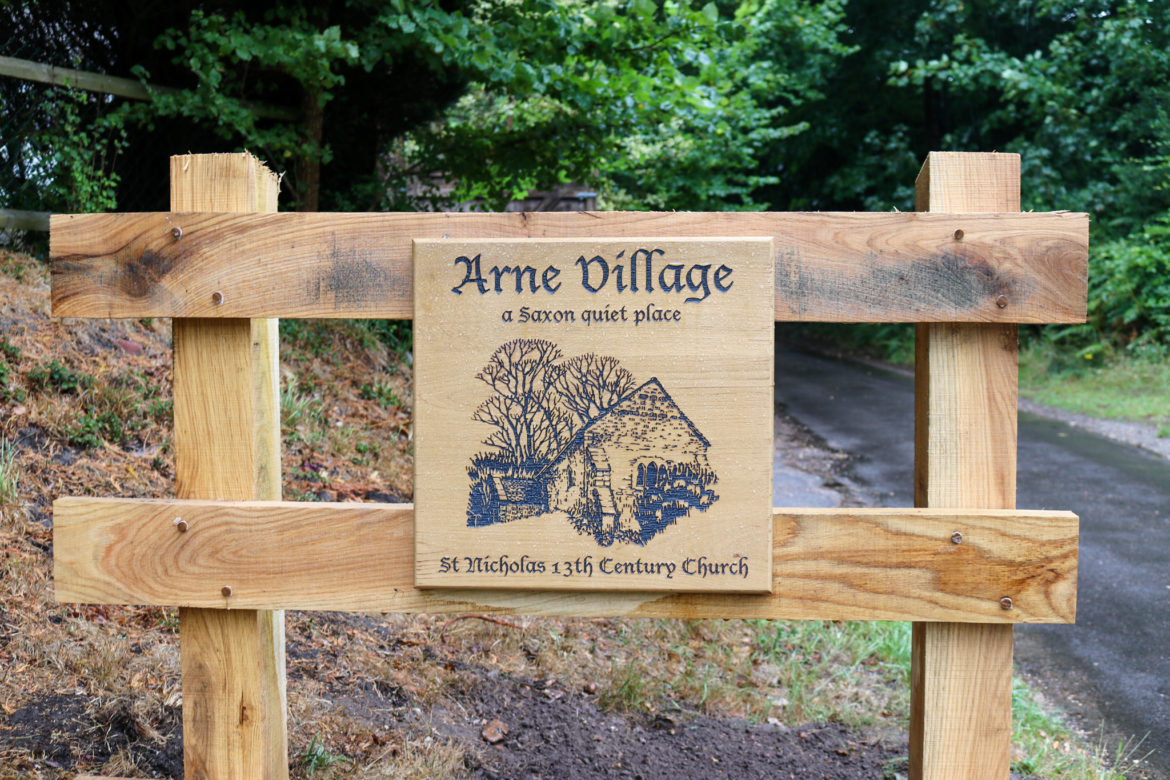
There is a less well-known, yet similar story in the nearby village of Arne.
A Royal Navy Cordite factory was built only a few miles from Arne village during WWI for the production of missiles. This was then deemed a target for German bombers in WWII and so a ‘decoy factory’ was set up around Arne. These so-called ‘Starfish’ decoys could be set alight to give the appearance of a factory, thus duping aircraft into bombing empty countryside.
In 1942, the decoy was put into use, and the area was heavily bombed, causing huge devastation to the village and surrounding area.
Residents were asked to leave Arne village due to it now being unsafe and uninhabitable. The village remained largely uninhabited until the 1950s, and still has a very small population.
Today the area is best-known for its RSPB Nature Reserve: a large area of woodland and heathland on the Purbeck side of Poole Harbour that is home to a diverse array of wildlife, including all six of the UK’s reptiles.
Nearby points of interest
There are plenty of other places to explore – both while you’re at Tyneham for the day, and also for a return visit.
